February 14
We depart after breakfast and drive four hours on a good highway to Santa Marta. After checking into our hotel and eating lunch at a restaurant down the block, we depart at 3PM for an afternoon tour of the center and a look at evening’s glow on the Coast.
Our guide, Diva, was very good; knew her stuff and very personable. Perhaps the most interesting part was a lengthy discussion of the politics of Colombia in the past twenty years or so, in which the crooked government has been making deals with drug cartels and the paramilitary. Diva is skeptical as to whether current peace talks will improve anything, but she remains a fiercely loyal Colombian, despite personal experiences that she and her family has had. The discussion gives one a clear sense of how different the problems Colombia faces from those we face in the U.S.
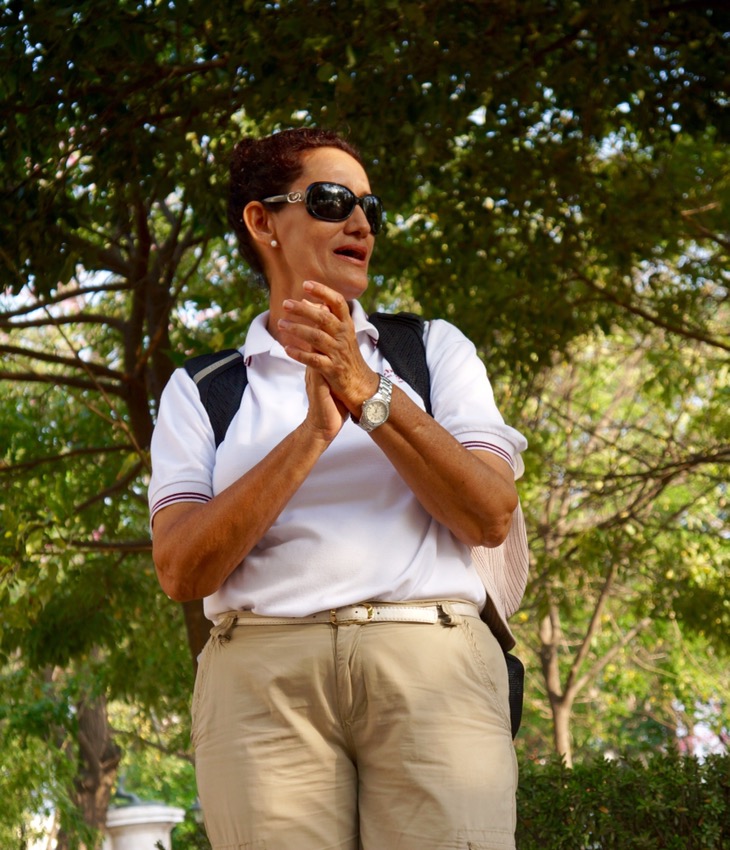 This city was the first colonized place in South America in the 16th century. Since then, it has participated in the slave trade from Africa, was terrorized by pirates for many years, fell from prominence and is undergoing a revitalization plan, as nicer boutique hotels and restaurants start moving in. The first church in the Americas, a beautiful waterfront, quaint narrow and colorful streets and friendly locals make it a fine place to absorb the Caribbean spirit in a place that is far less known and less commercialized than Cartagena. Sunday is a very quiet time, except near the beach, which is a bustle of activity. This city was the first colonized place in South America in the 16th century. Since then, it has participated in the slave trade from Africa, was terrorized by pirates for many years, fell from prominence and is undergoing a revitalization plan, as nicer boutique hotels and restaurants start moving in. The first church in the Americas, a beautiful waterfront, quaint narrow and colorful streets and friendly locals make it a fine place to absorb the Caribbean spirit in a place that is far less known and less commercialized than Cartagena. Sunday is a very quiet time, except near the beach, which is a bustle of activity.
 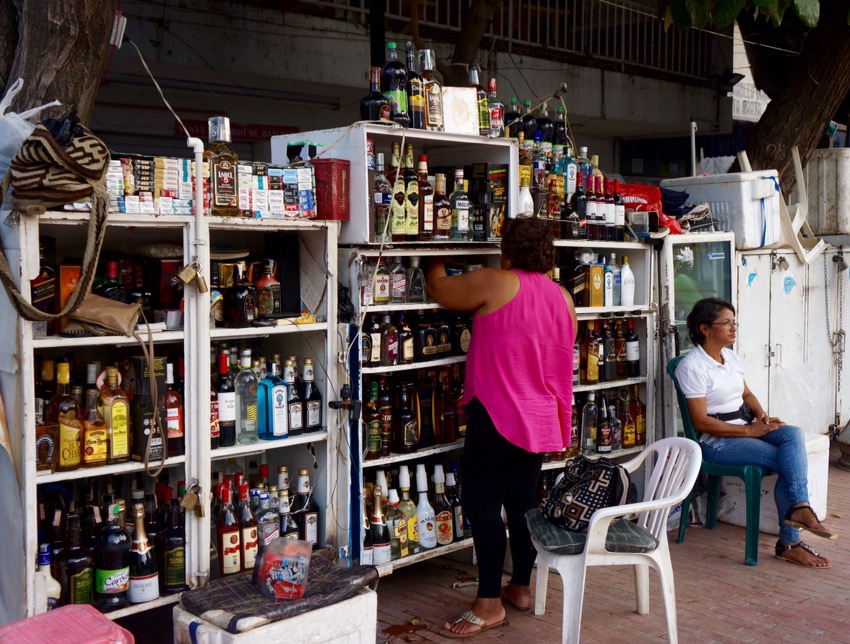
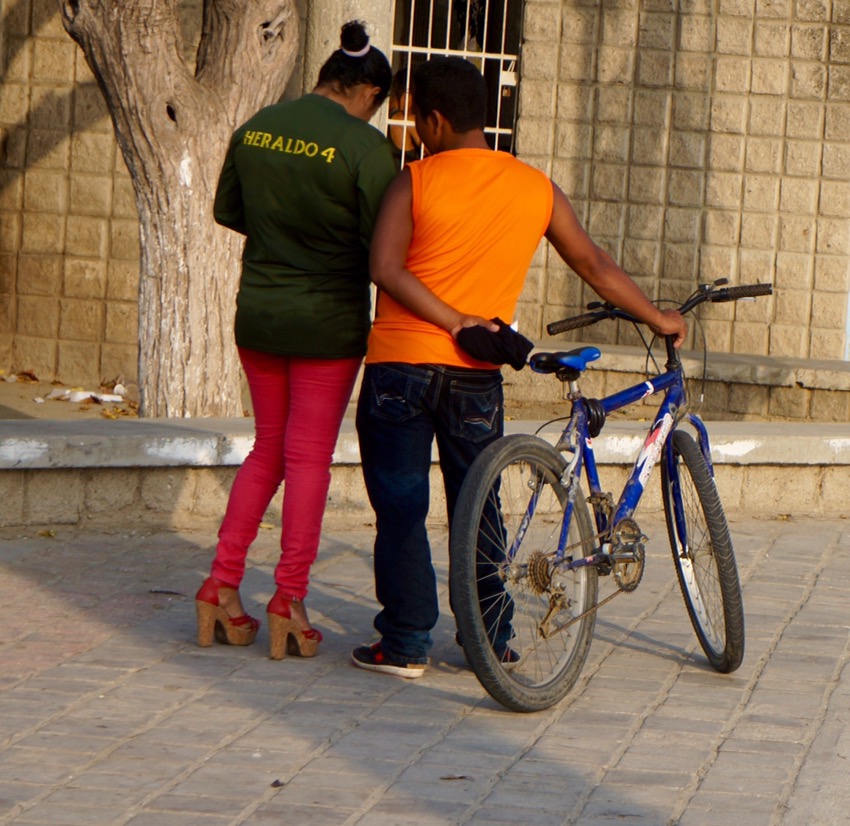
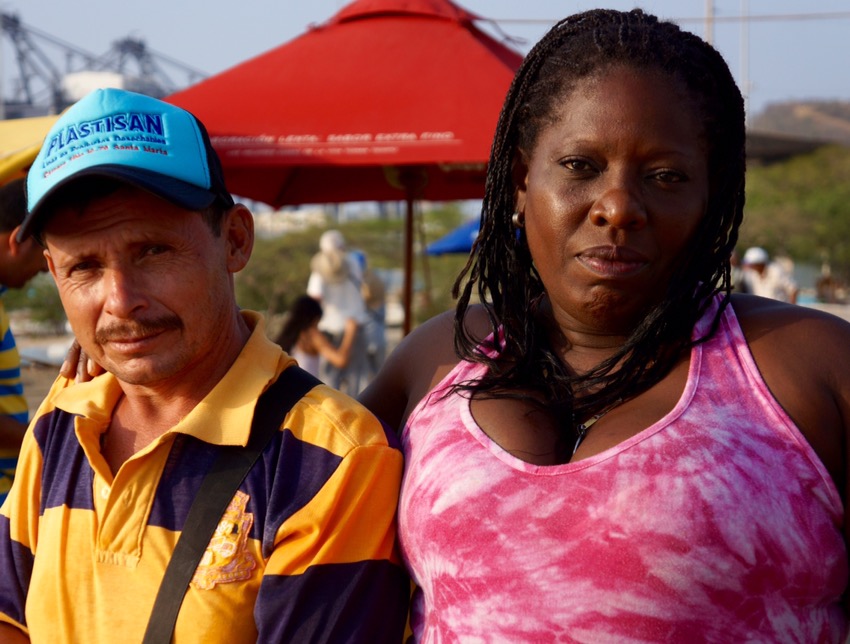 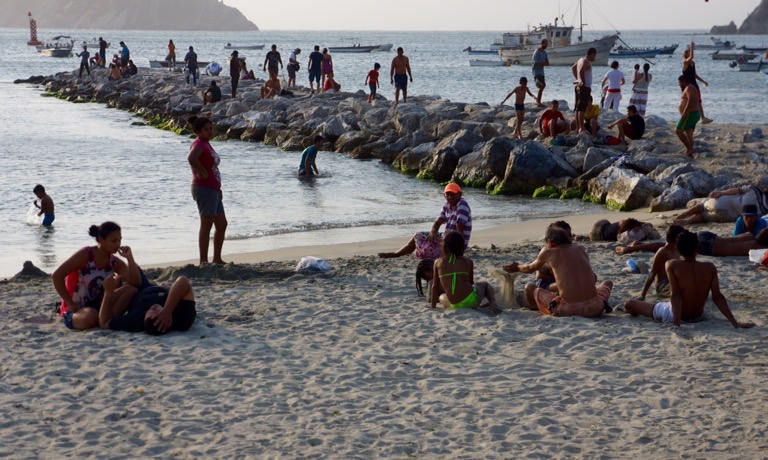
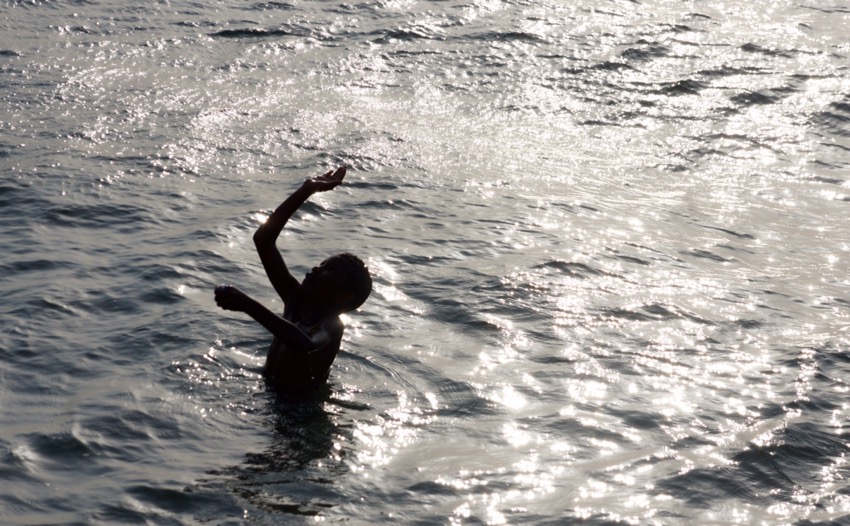 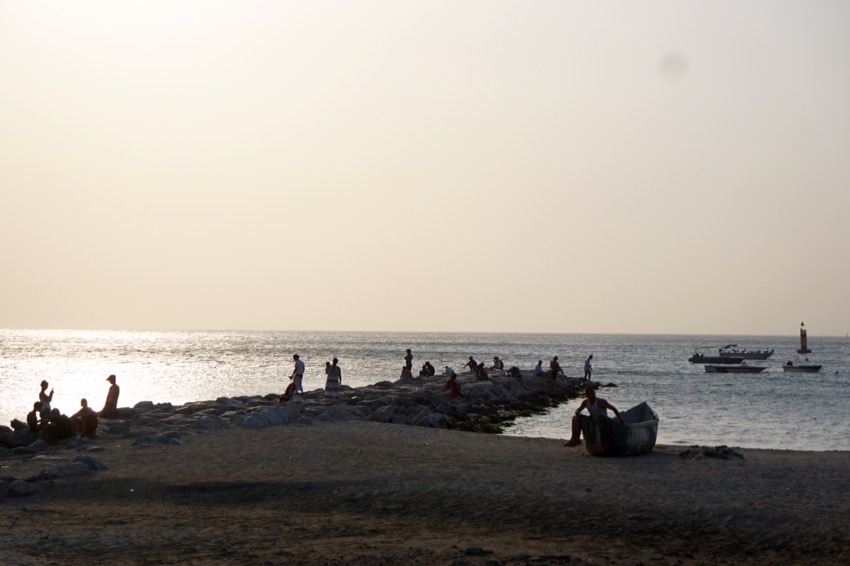
Rich, Barbara and I all around together, they do a bit of shopping and we stop for a drink, before returning to our hotel to clean up.
The group eats well at a restaurant close to our hotel, the Casa del Piano, located a few blocks from the bay.
February 13
Some group members return to Chupundun with Nevada to photograph in the first light of day, but I pass, having felt a bit uncomfortable in our first visit to that village. Mid-morning, after breakfast, we return to Cartagena via private boat, a very bumpy two-hour ride. Here’s Patti, relaxing on the boat, and a view of Cartagena from the water.
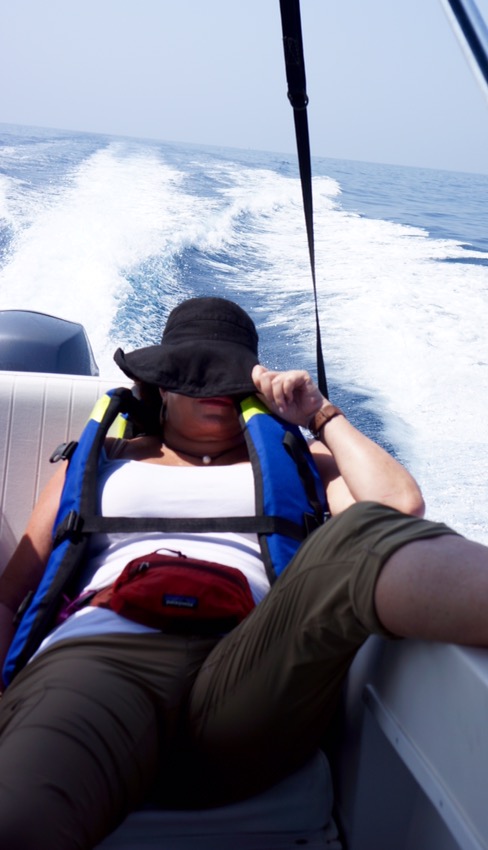 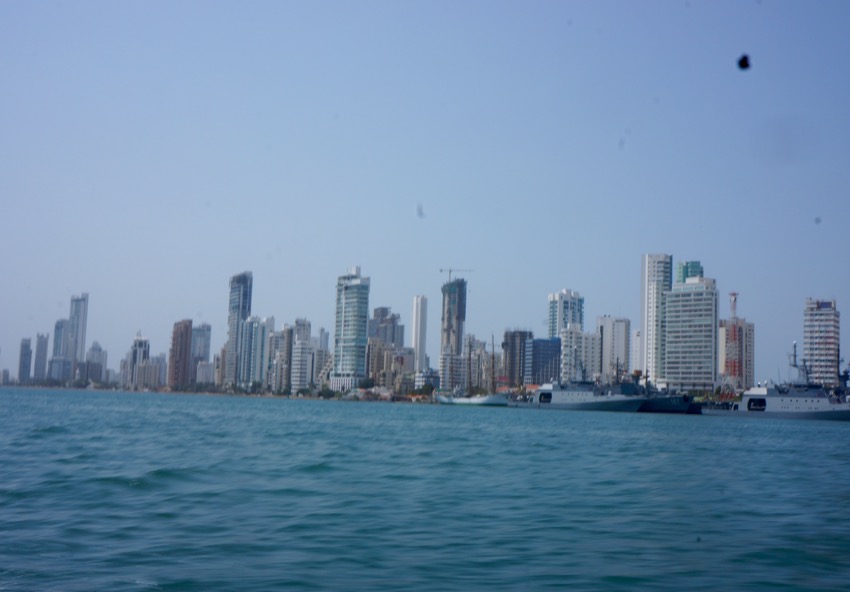
Lunch at the same hotel we stayed at the first time, then we pan out for shopping and exploring. As we’ve been told that there will be shopping opportunities in local towns, I pretty-much just look.
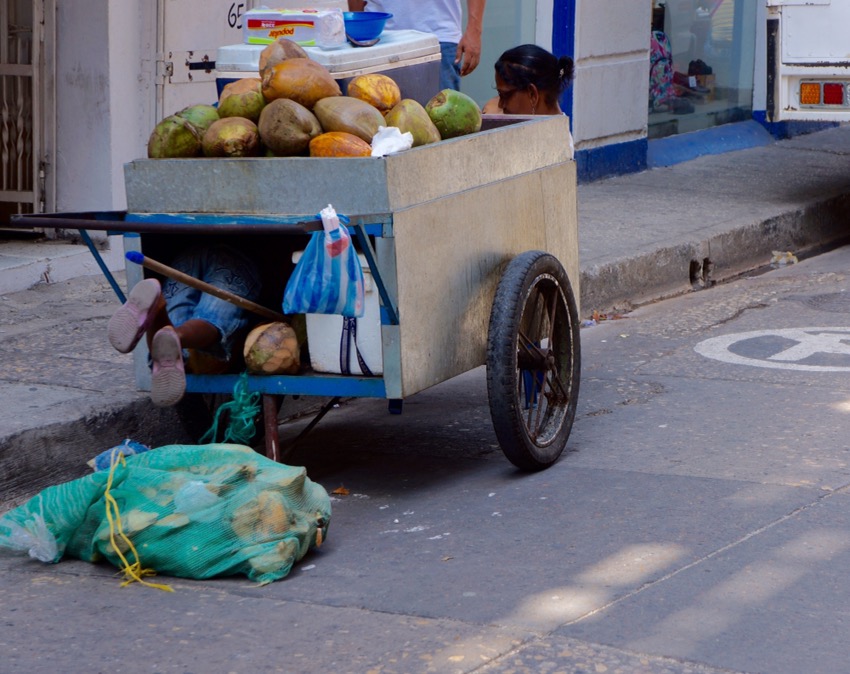
We return to the hotel and walk to where Nevada has arranged for some women all dressed up with fruit baskets on their heads to pose for us. These women, called Palenqueras, are in fact part of the local culture and are actually selling fruit to people. But, in general, I don’t find this kind of posed session much fun. Here are a few (not necessarily the best) of many I took.
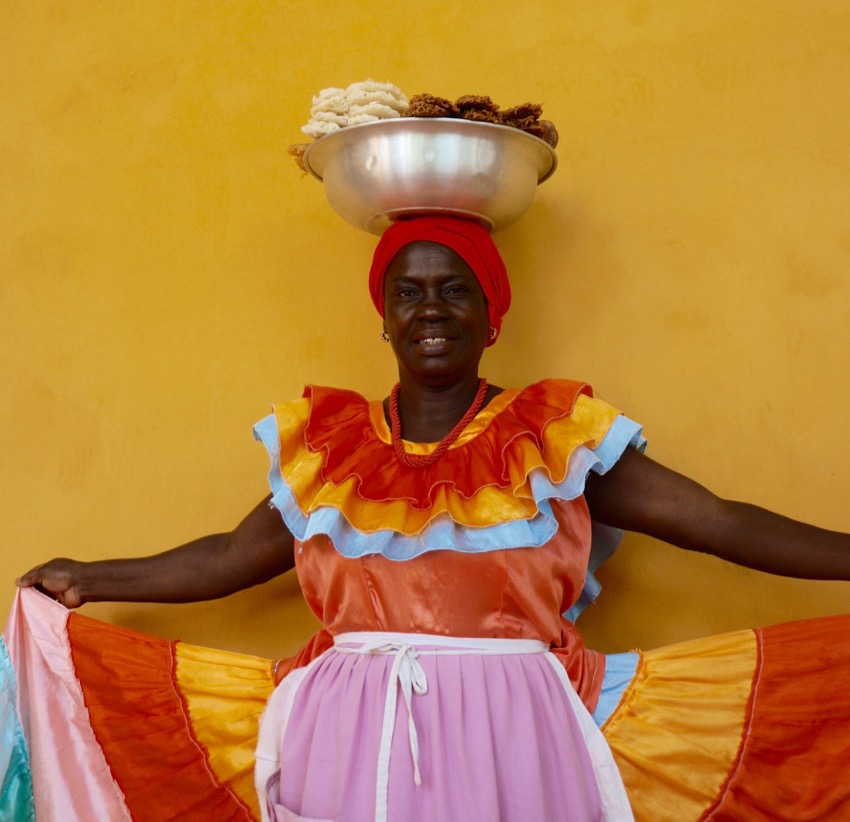 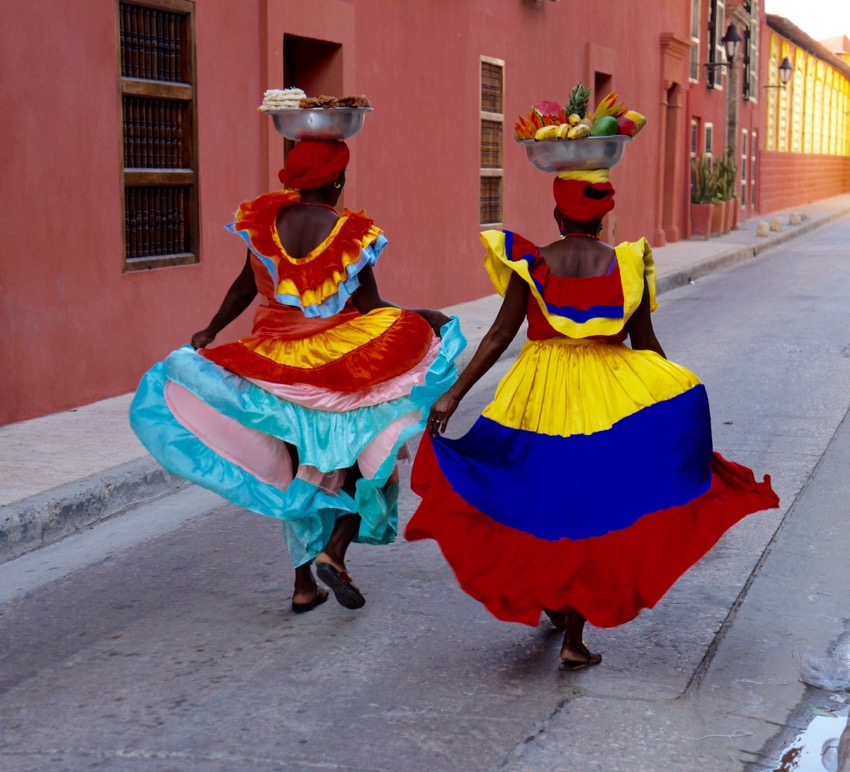
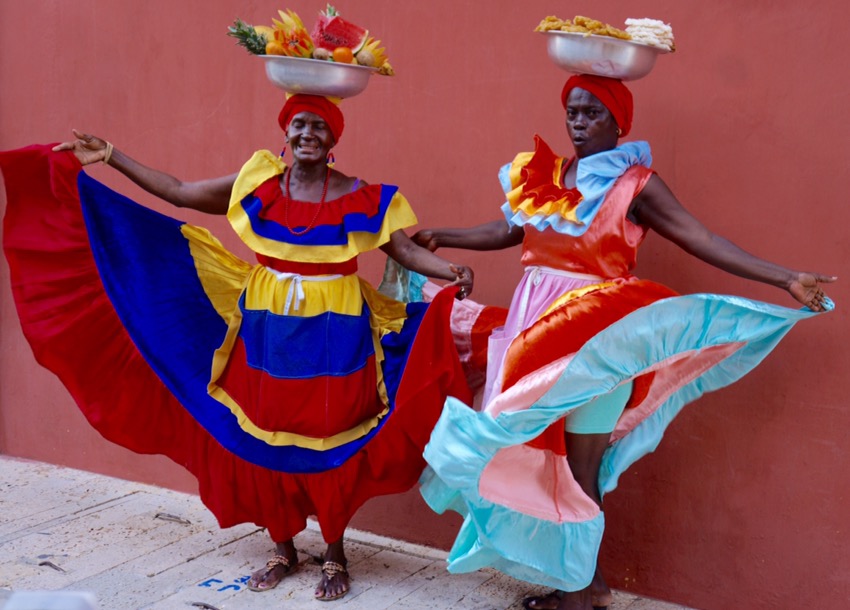 

I find the photos of group members (below, Stan) taking photos or photos of passers by with the Palenqueras in the background more interesting than the posed photos.
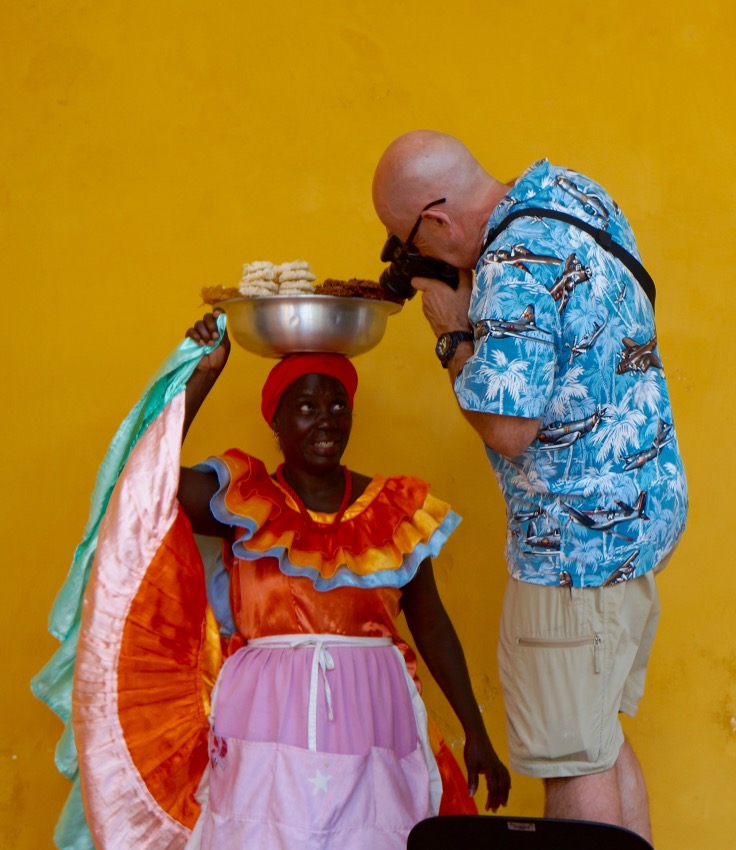 
 After that, I Went with Rich and Barbara, to the Cartegena Hard Rock Cafe, the first Hard Rock Cafe I’ve ever been to, for drinks. Then we go to watch the last light fall on horse drawn carriages, one of the characteristic sights of Cartagena, in one of the squares. After that, I Went with Rich and Barbara, to the Cartegena Hard Rock Cafe, the first Hard Rock Cafe I’ve ever been to, for drinks. Then we go to watch the last light fall on horse drawn carriages, one of the characteristic sights of Cartagena, in one of the squares.
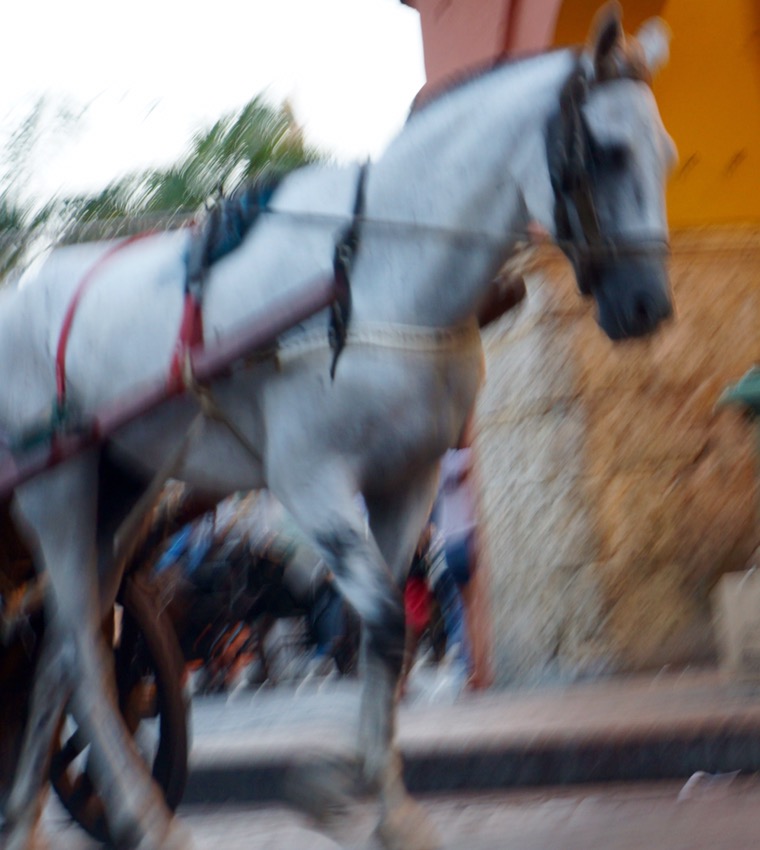
The group has an excellent dinner at Alma Restaurant. A measure of how popular Cartagena has become: a group of more than twenty MBA students from Columbia University in New York, is having dinner in an adjoining room of the restaurant, having flown down for the weekend.
February 12
On Punta Faro, we’re treated to luxury resort service and comforts – an exclamation point to our journey after a week of intense photography and travel. Punta Faro also gives us something else that few others get to experience: direct and local access to one of the little-known places in Colombia, Islote Santa Cruz. This is the world’s most densely populated island, about 5000 sq.ft. of space, with hundreds of descendants from just a few original families. To prevent the island from being inundated by visitors, tourists are not permitted. Because Nevada and Adam have been there twice already and shown sincere interest in the inhabitants, our group is grandfathered in. We are greeted very warmly, and Nevada passes out photos brought with her that she’s taken on prior visits.
We take a short trip to the island in the morning and wake up with the inhabitants, and wander around to talk with and photograph them. The garbage boat, which comes monthly from Cartagena is there.
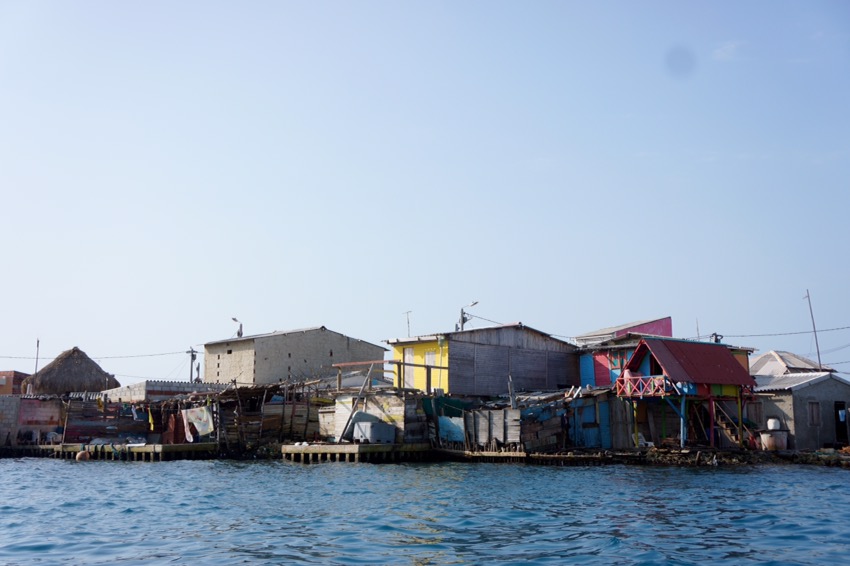 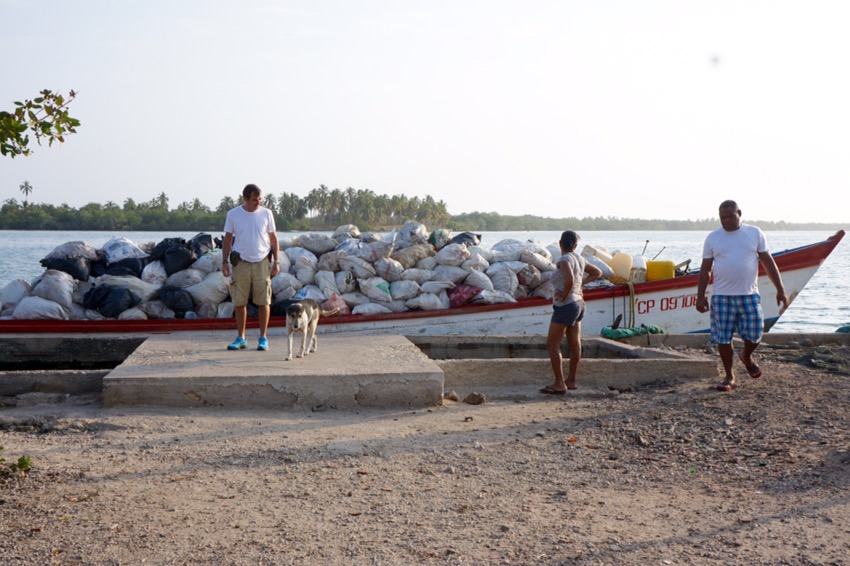
After the morning trip, I spend half an hour reviewing my blog photos with Nevada. Her comments are very helpful. To a significant extent, I can readily identify which of my photos are pretty good. Sometimes, though, she does not care for photos that I liked and, when I hear her thoughts, I almost always agree. In a few cases, she really likes photos that I had not considered among my best, and that, too, is helpful. She thinks I have far too many photos on the blog, and I agree, but as the photos are popular with those who follow the blog, I overdo it. She points out that, as a photographer, you are judged by your worst photos and, though I don’t think my followers are judging me, it’s a good rule to keep in mind. Nevada combines critical comments with recognition of good ones, which makes her a credible and excellent teacher. If I have time, I may go back and prune photos from earlier posts.
Swam in the ocean and sat in the sun for a while. Then introduced three other group members (and two bar tenders) to the Chi-Chi, a Piña Colada with vodka, instead of rum. Life has taken a definite turn for the better.
We return to the island in the late afternoon for a longer, more relaxed time period, during which we bring beer and soft drinks to the inhabitants. Evening light brings out the dominoes and card games, and the children playing soccer or marbles, and mugging for photos. The two photography sessions on the island are very different; and both good.
Compact and colorful streets remind you of a very colorful small Greek village while the Caribbean coral surrounding the place provides near unlimited natural resources that the inhabitants seem to gather in a most harmonious way. Local crab, fish, turtle, shark and stone are abundant and are seen constantly; evening light brings out the dominoes, the children and the fresh-cooked fish. Both young and old are happy to be photographed.
 
 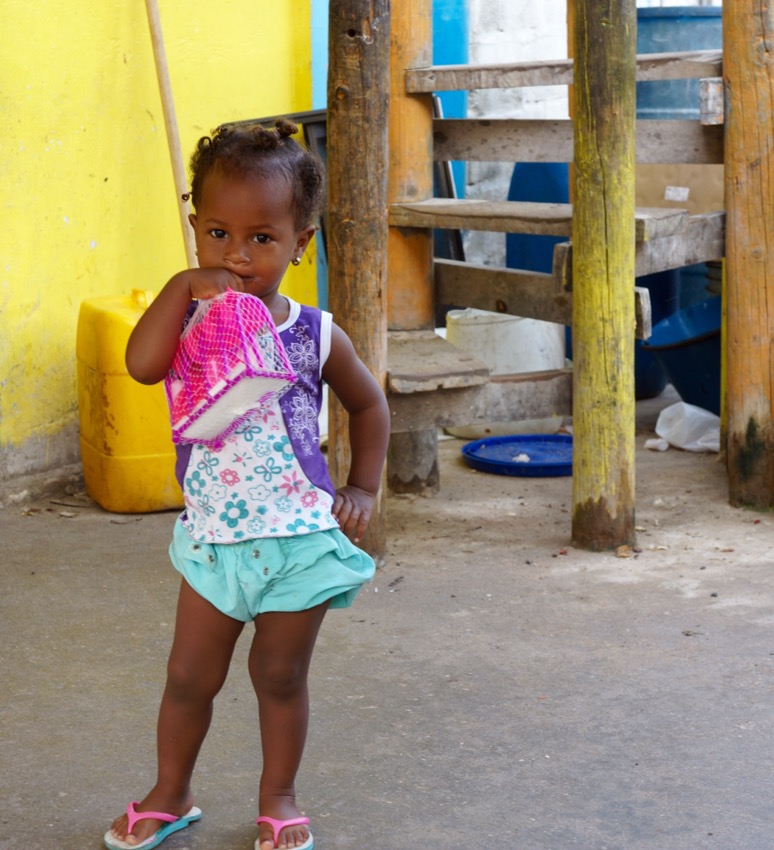
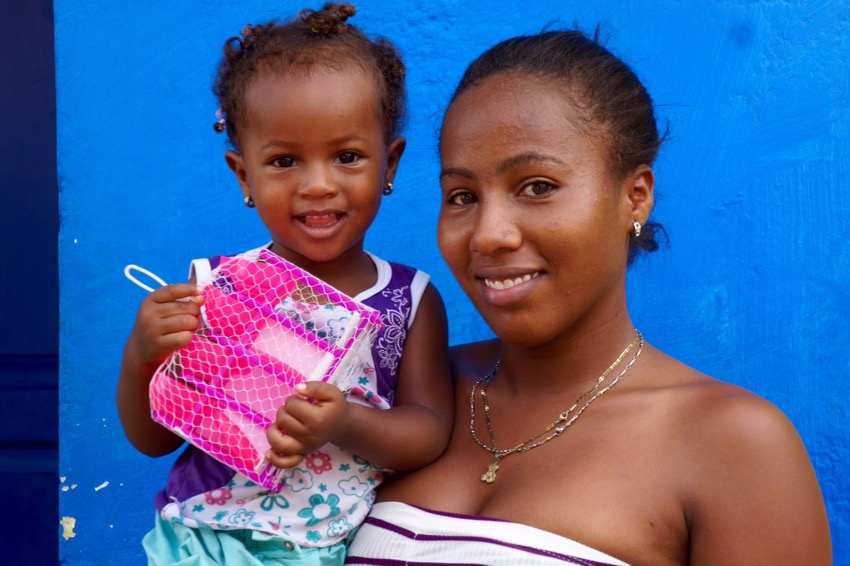 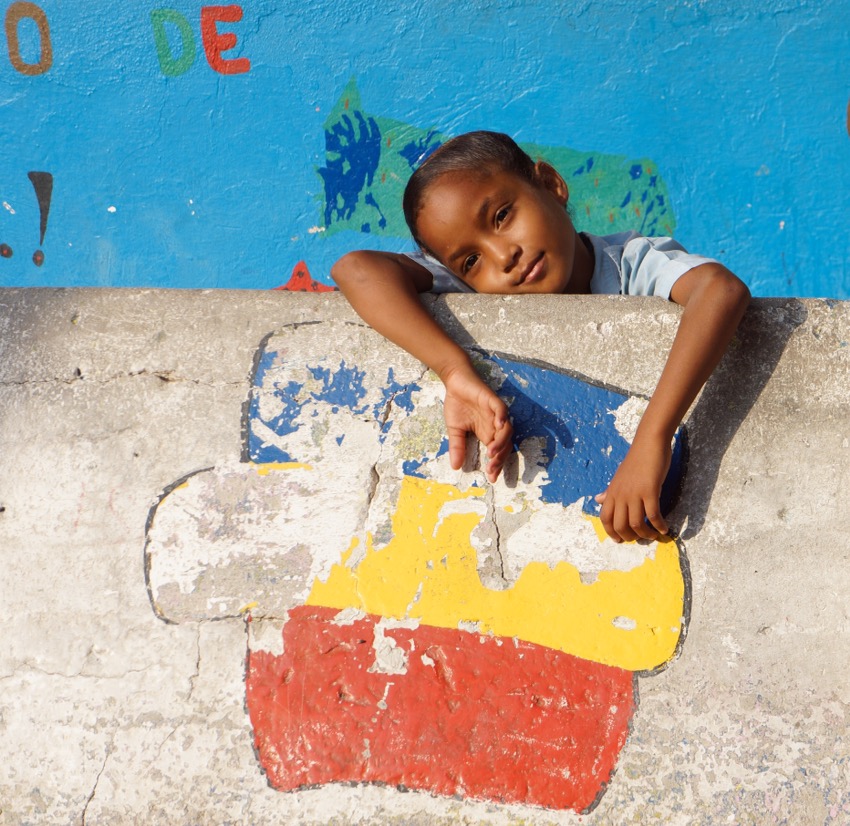
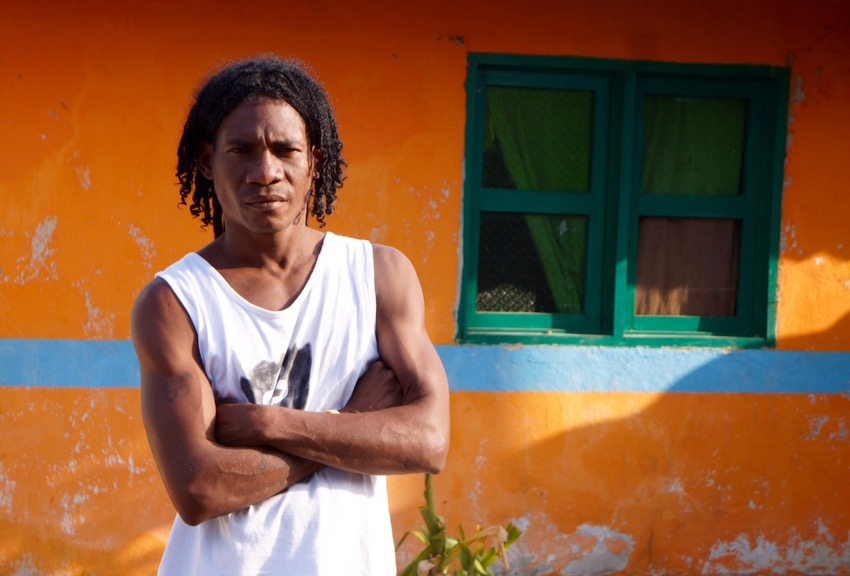 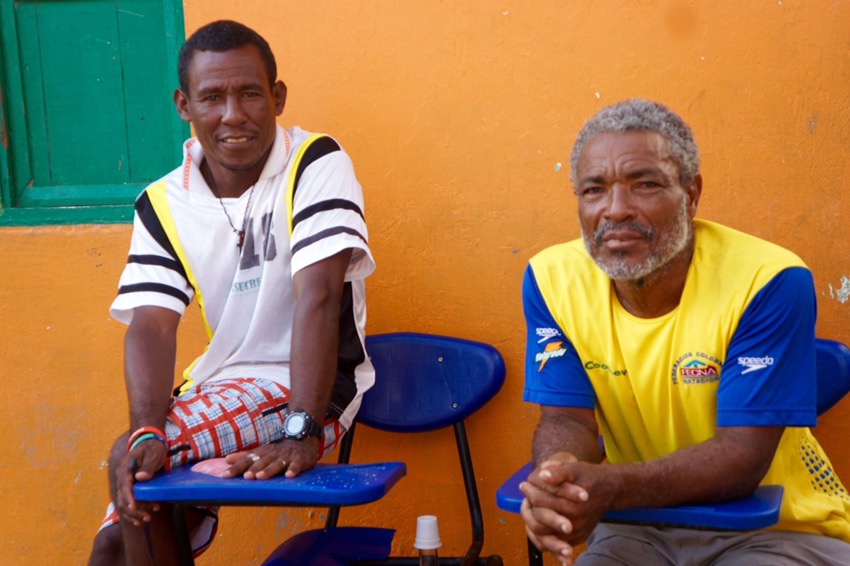
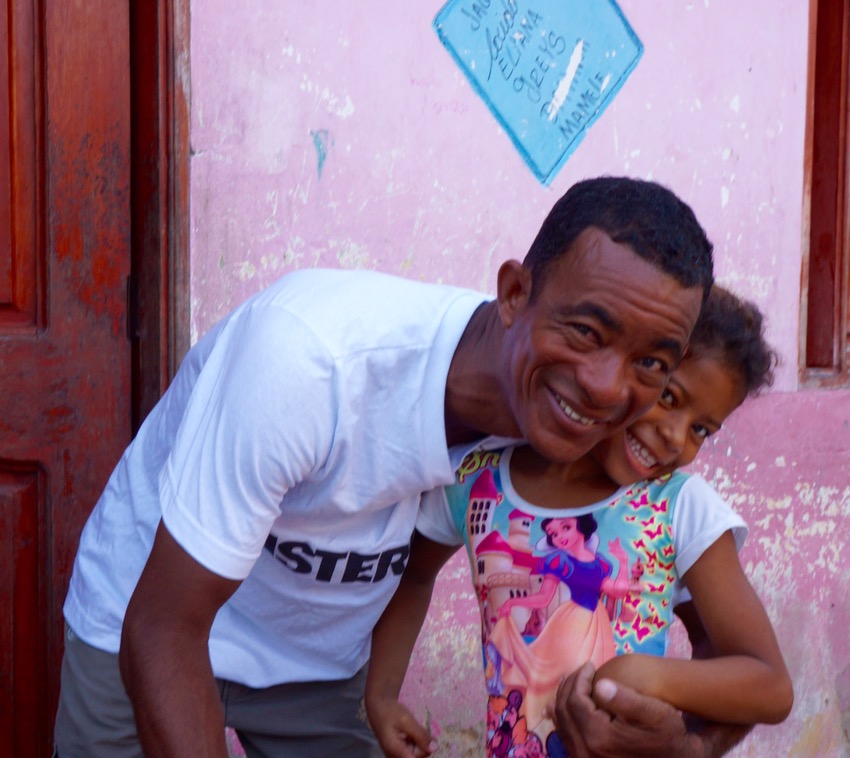 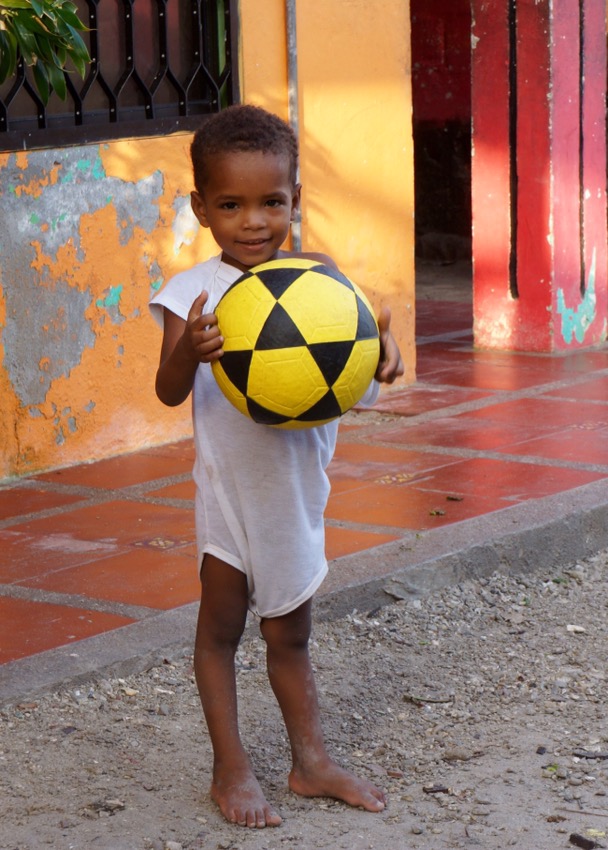
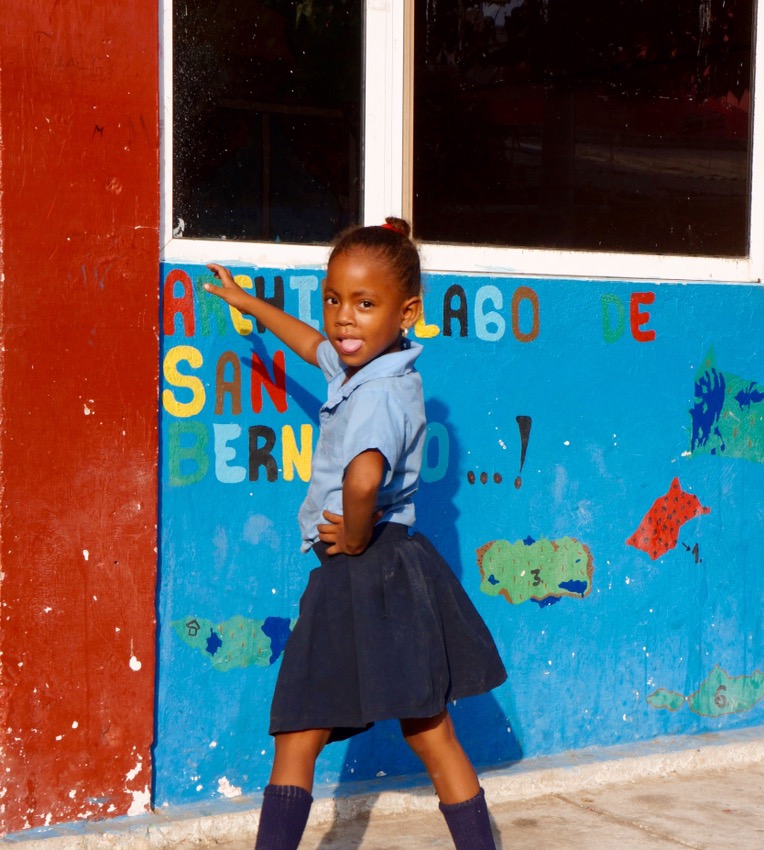 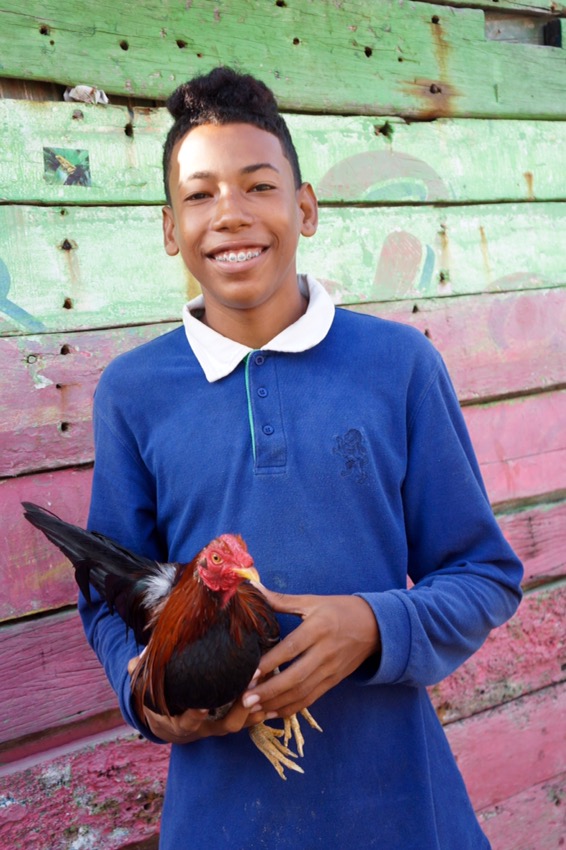
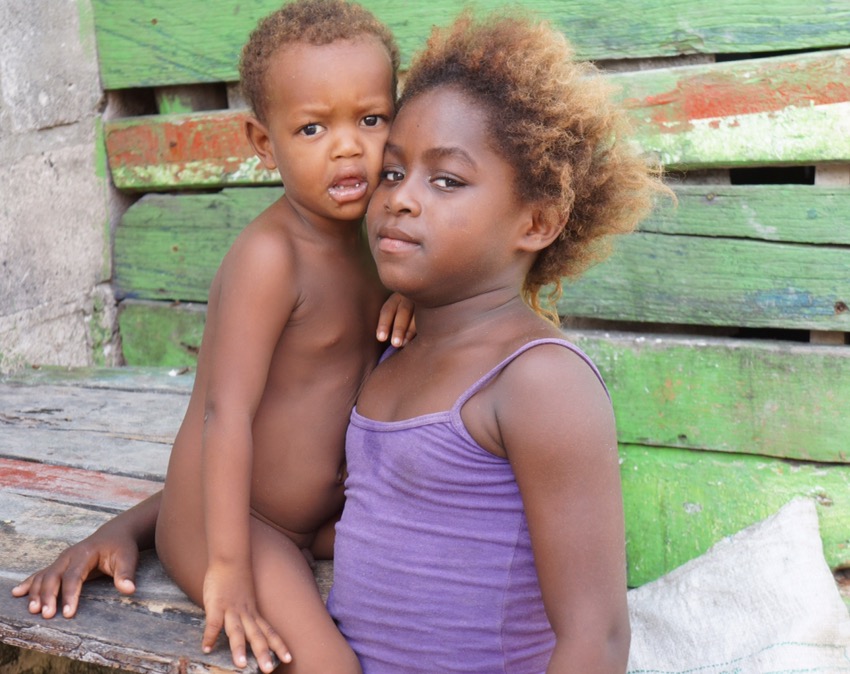 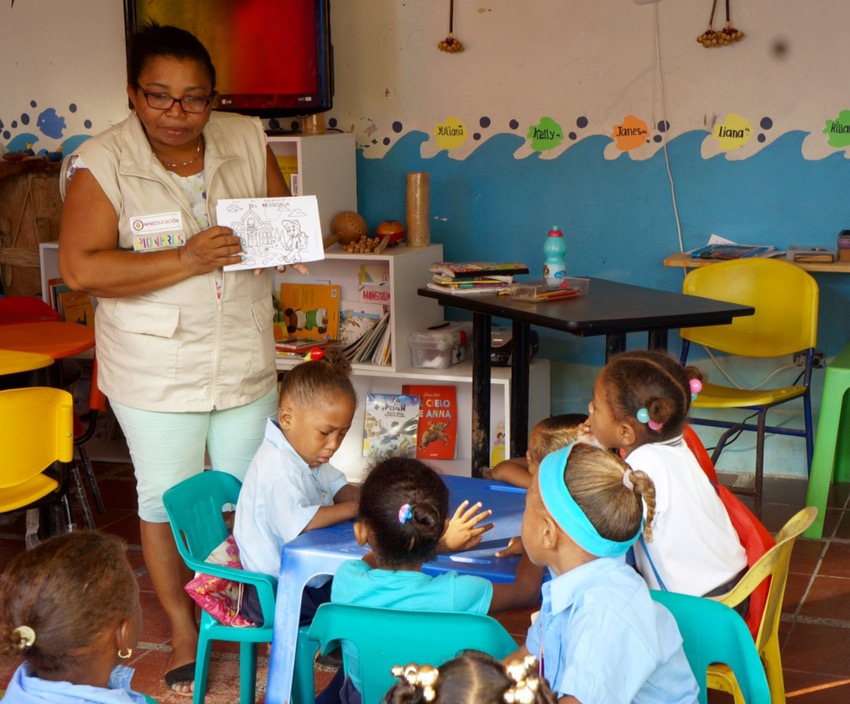
 
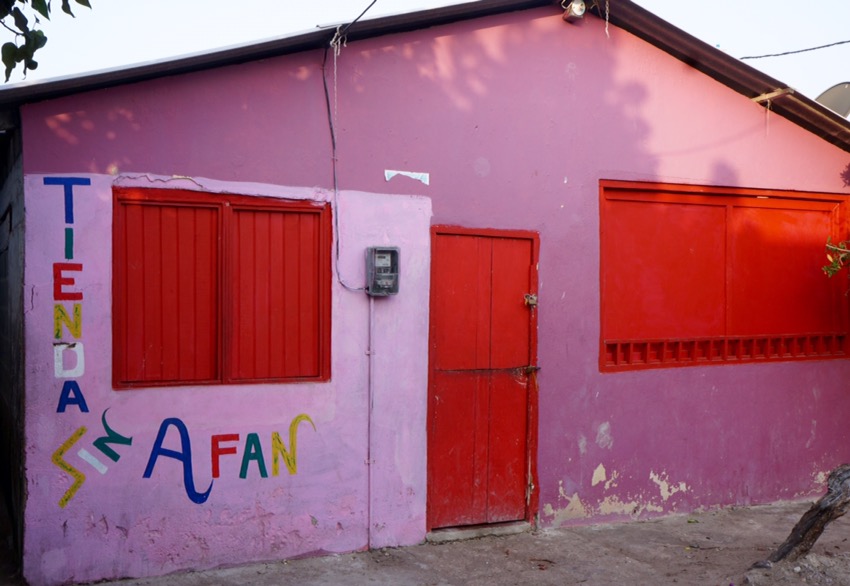
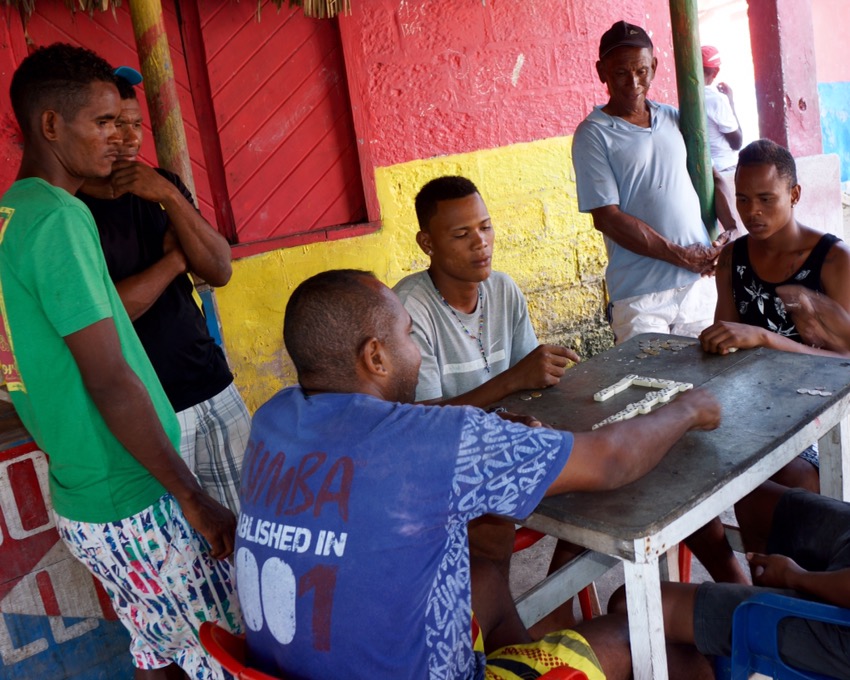
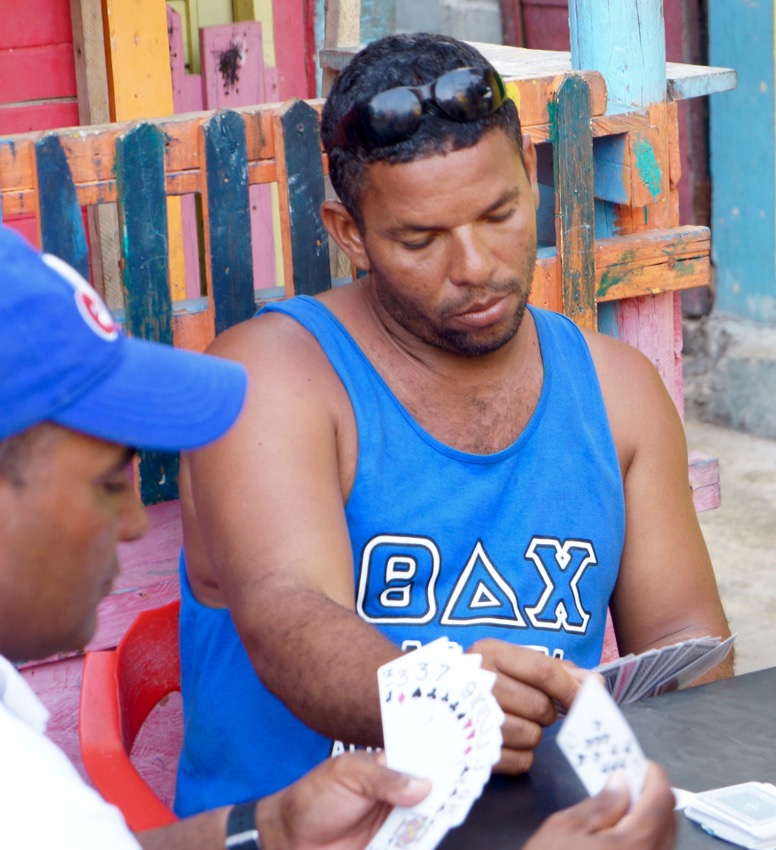 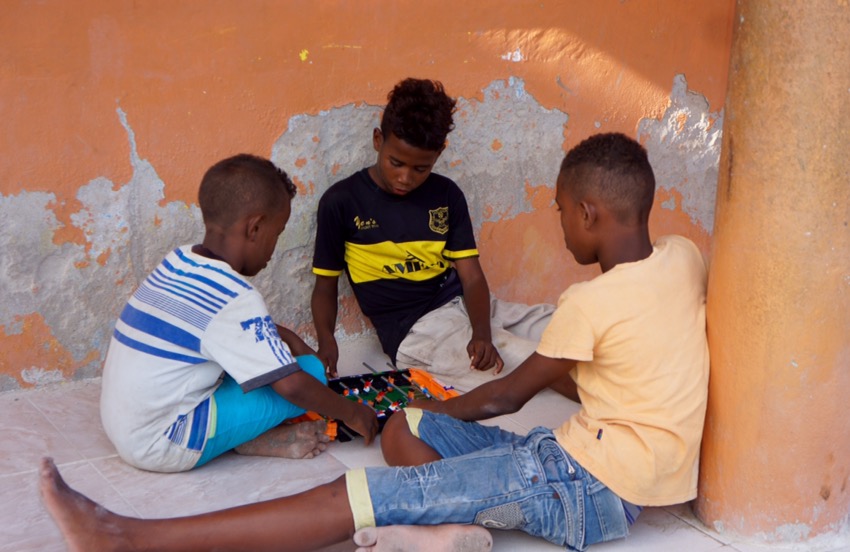
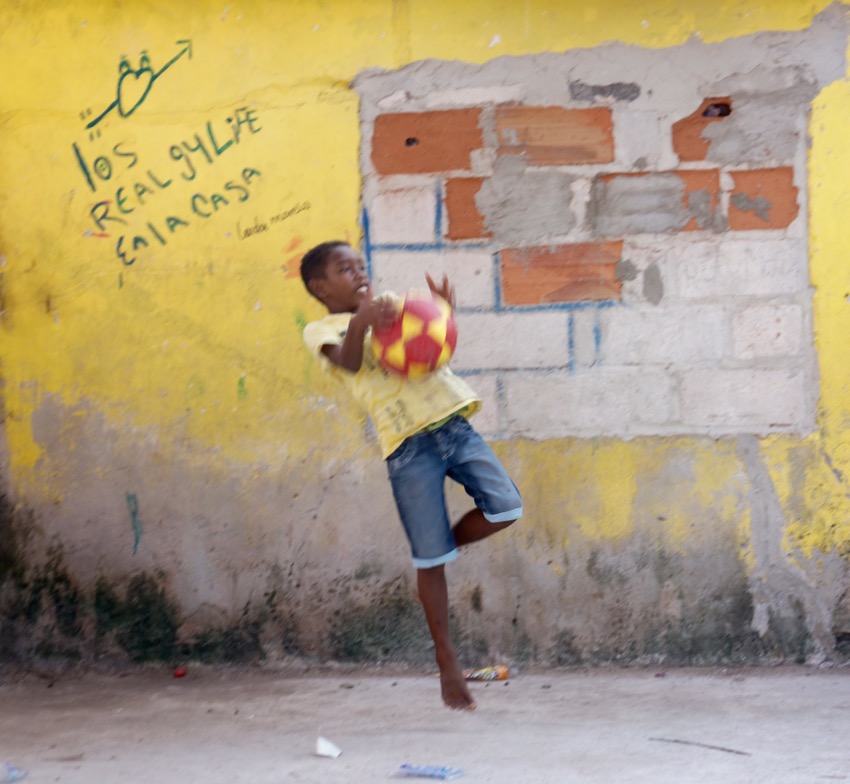
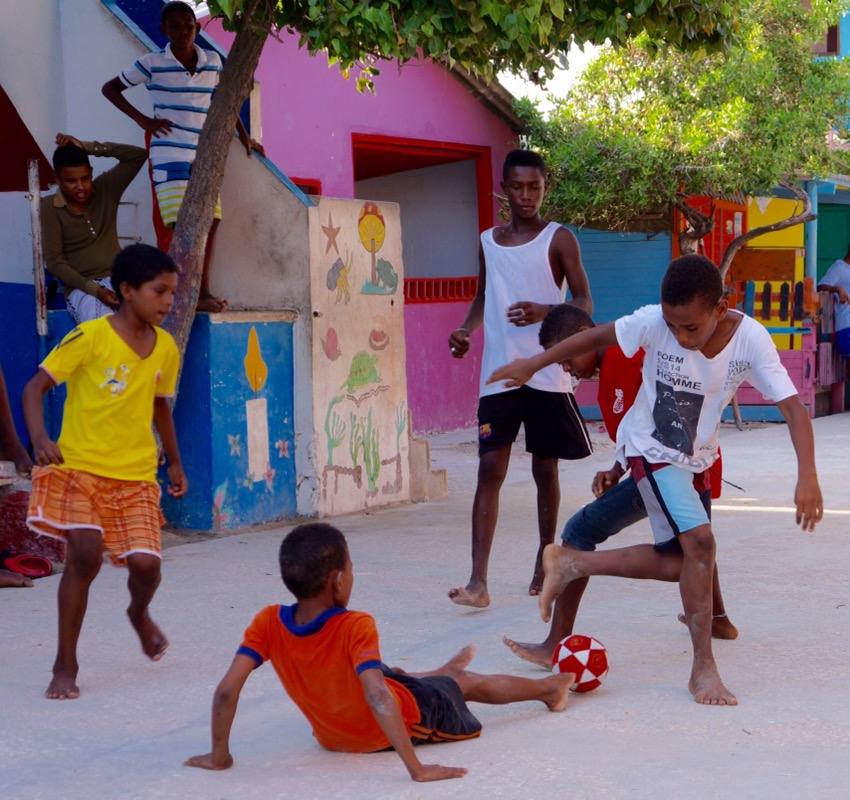 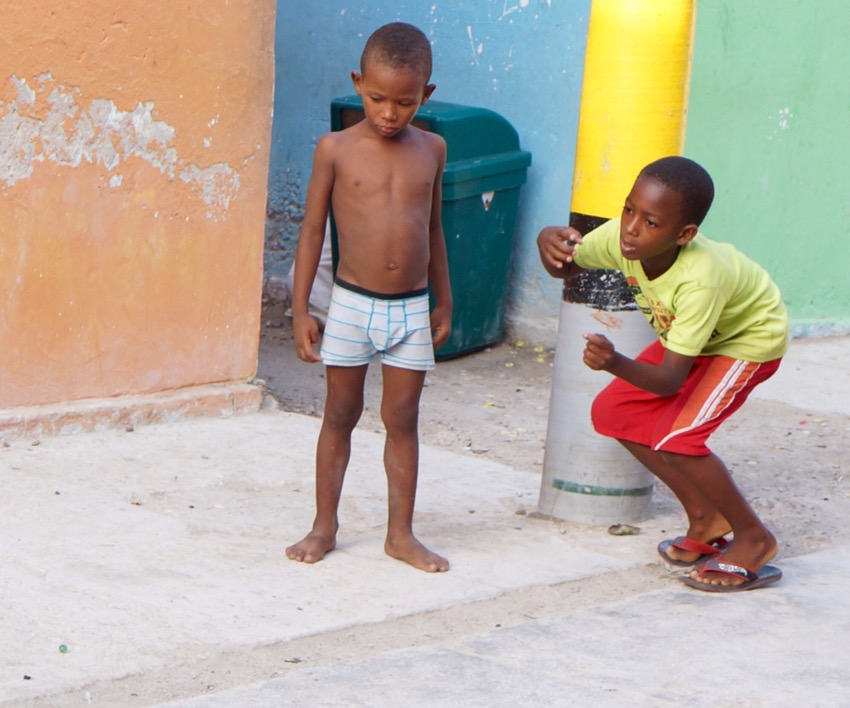
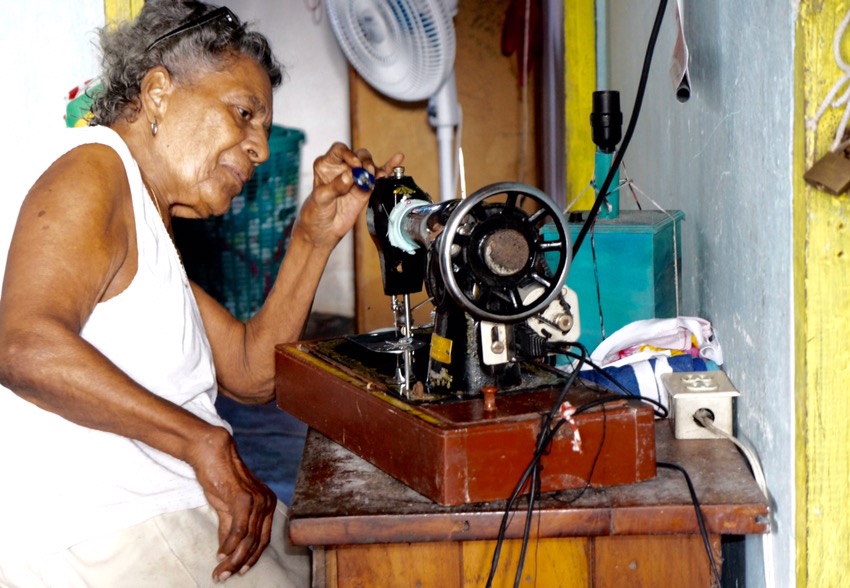 
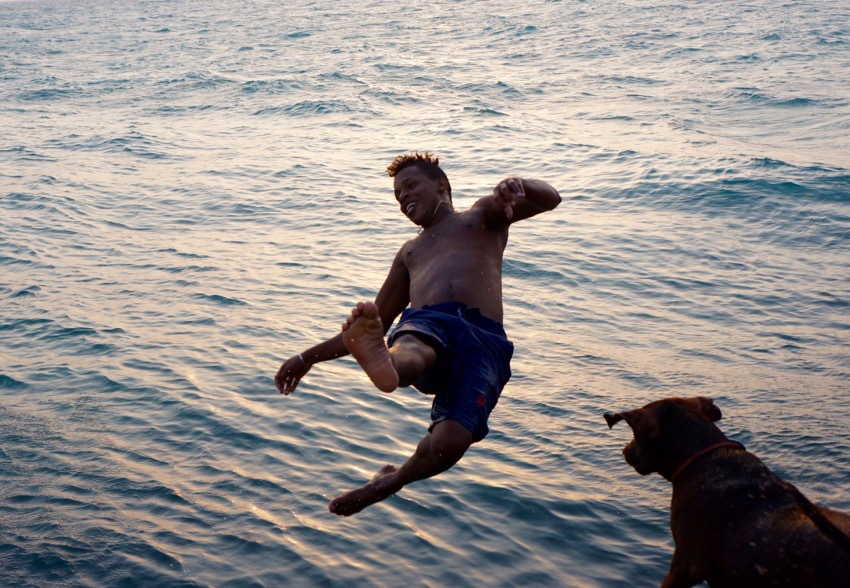
Isolate Santa Cruz is a truly unique place, and we are privileged to be welcomed in to photograph its people. I don’t feel nearly the same voyeuristic sense that made me somewhat uncomfortable photographing in the village we visited yesterday.
We have a very good buffet dinner of curried shrimp and steak outdoors, then retire early.
February 11
We set out at 4:30 for an hour drive to a ferry we are to take. As we approach the ferry, we encounter a line of trucks. Apparently, a truck has been stuck on the ferry since yesterday and it can’t be moved. So, we are forced to turn around and circle around in our bus for a four-hour return towards the Caribbean coast. Pass through villages with stores lining the road, somewhat reminiscent of Ghana. Garbage lines the side of the road.
Arrive at Tulo only half an hour later than we would have by ferry, then take a 20-minute boat ride that turns out to be an hour. We leave via private boat from Tolu to the Parque National Natural Los Corales del Rosario y de San Bernardo. Or, Hotel Punta Faro! Punto Faro is an exclusive resort on its own island, shared with Chupundun, a small village on other side of island. Very nice, indeed. After lunch, lounge out beneath a thatch roof by the sea, with cool, heavenly breezes, a far cry from the sweltering heat of Mompos.
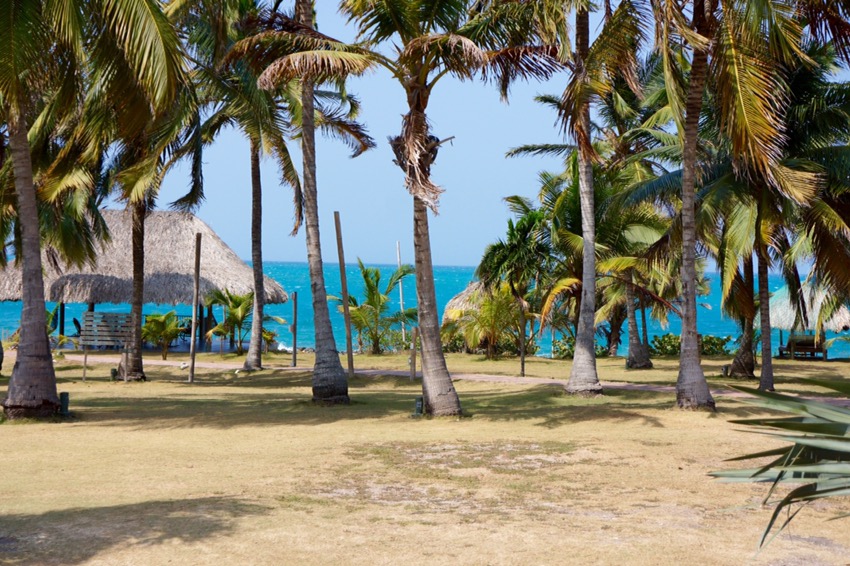 
We take an afternoon circuit around the island, checking out the town just behind the hotel. It’s a small village with friendly families, whose livelihood depends on the warm waters and the hotel visitors.
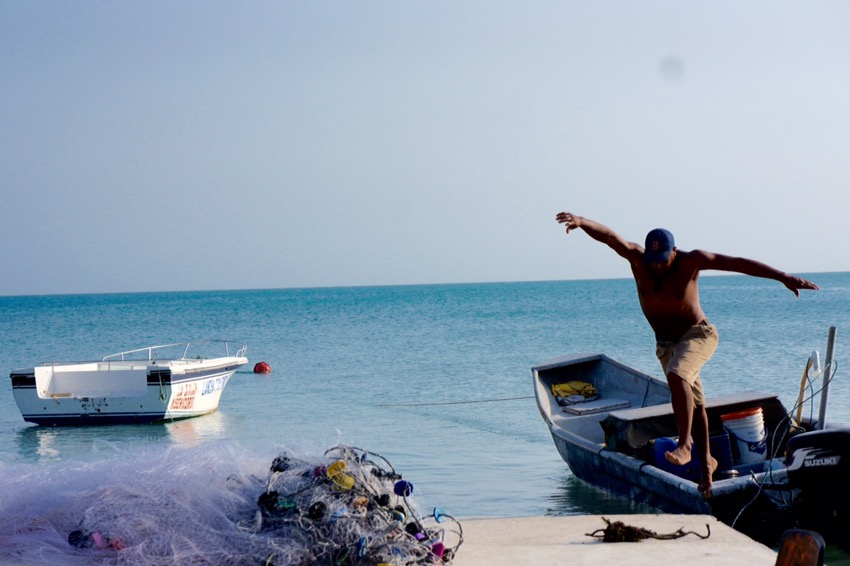 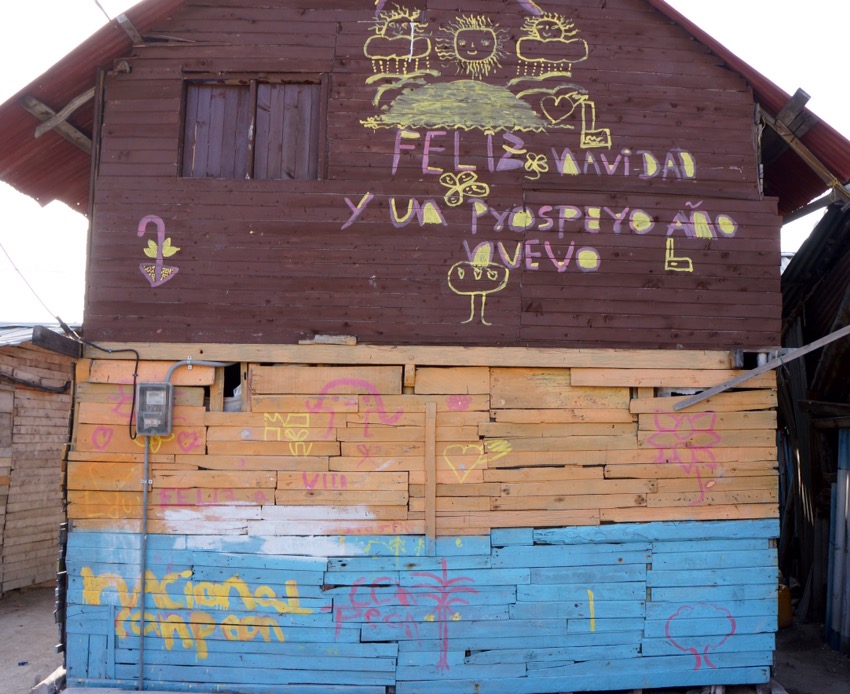
 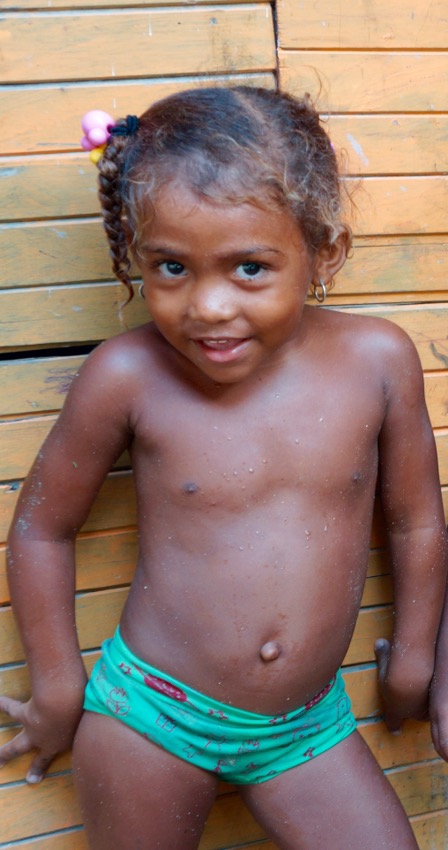
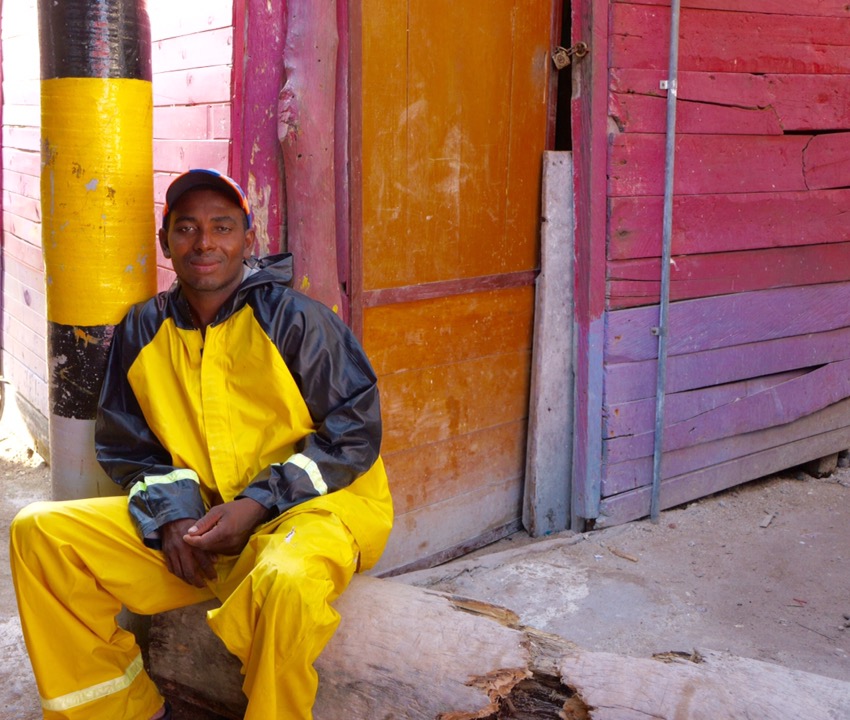 
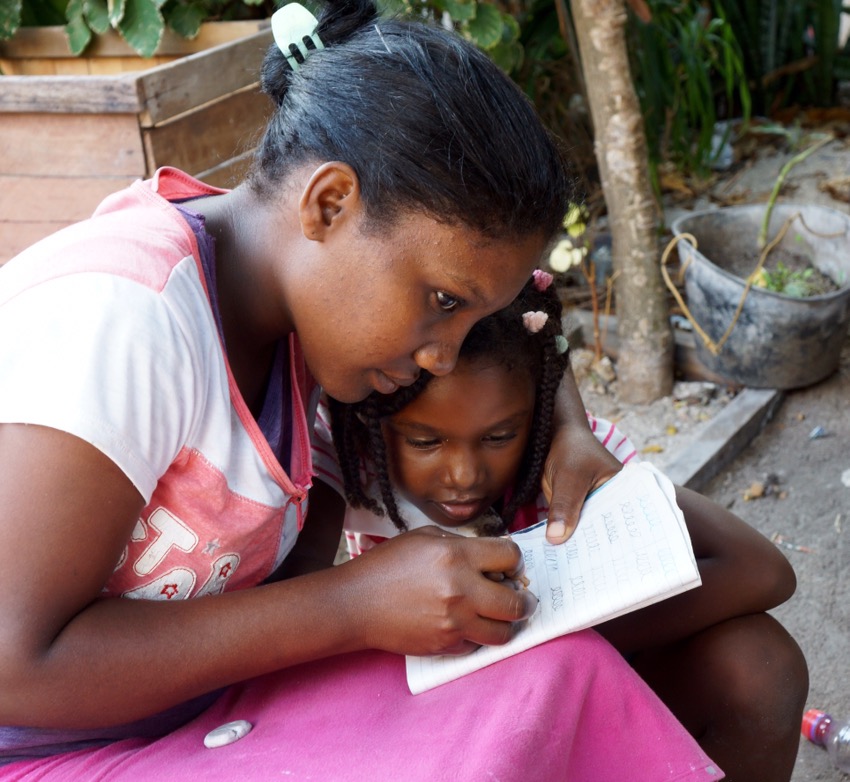
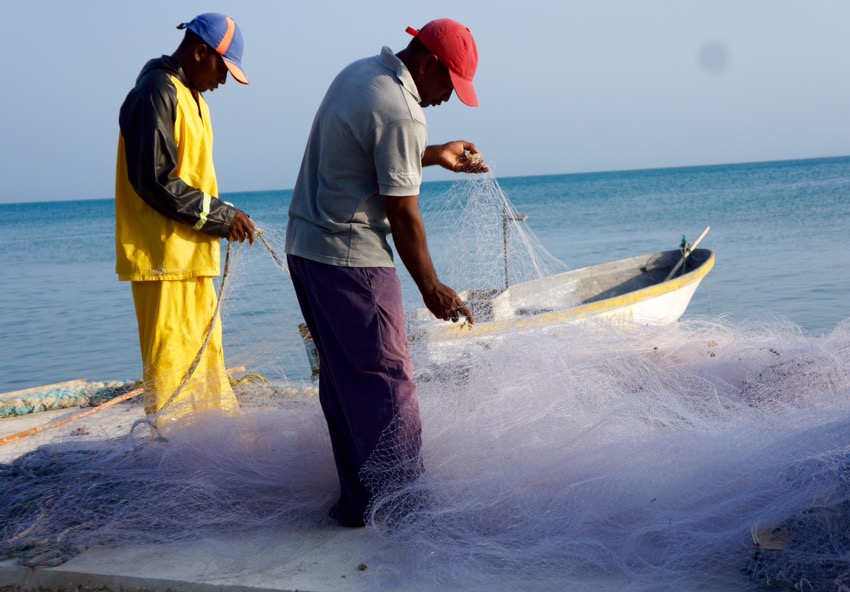
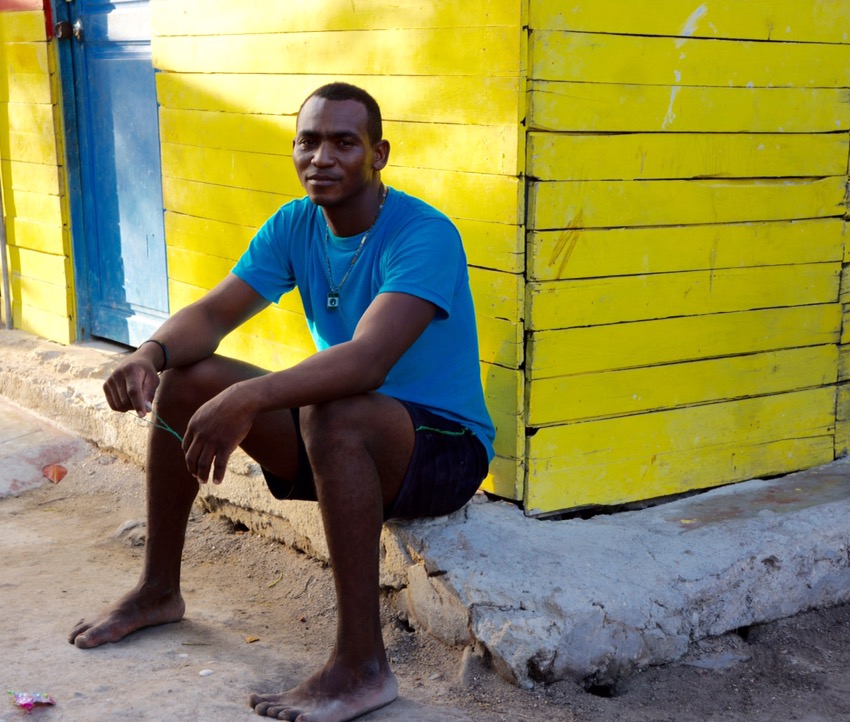
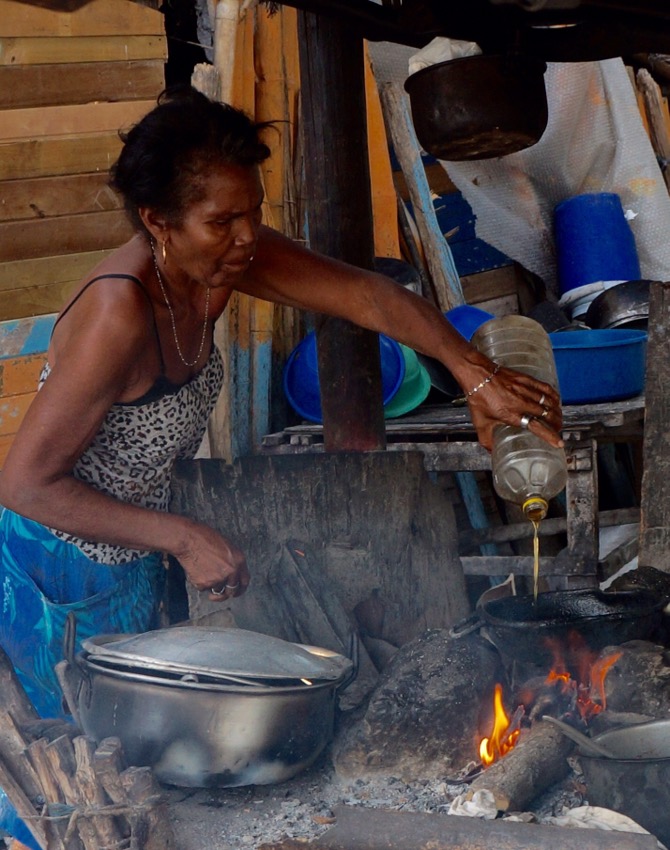 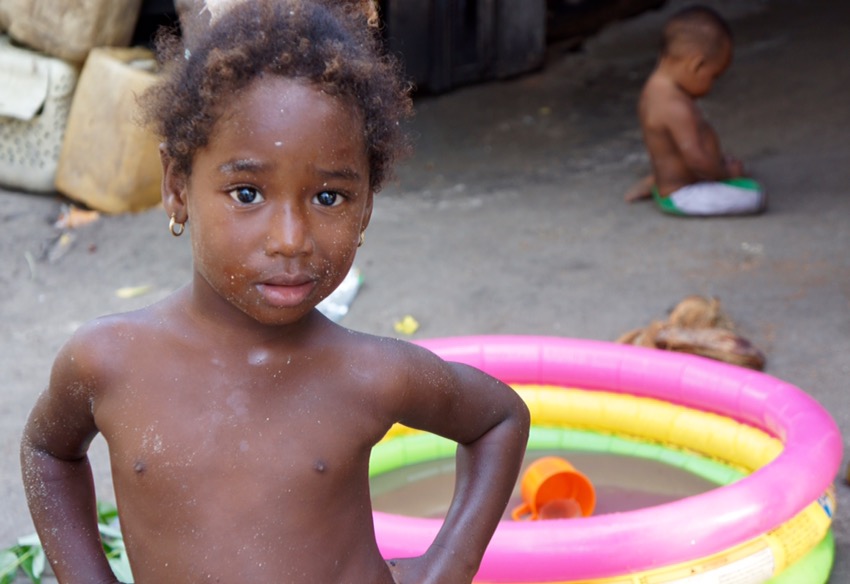
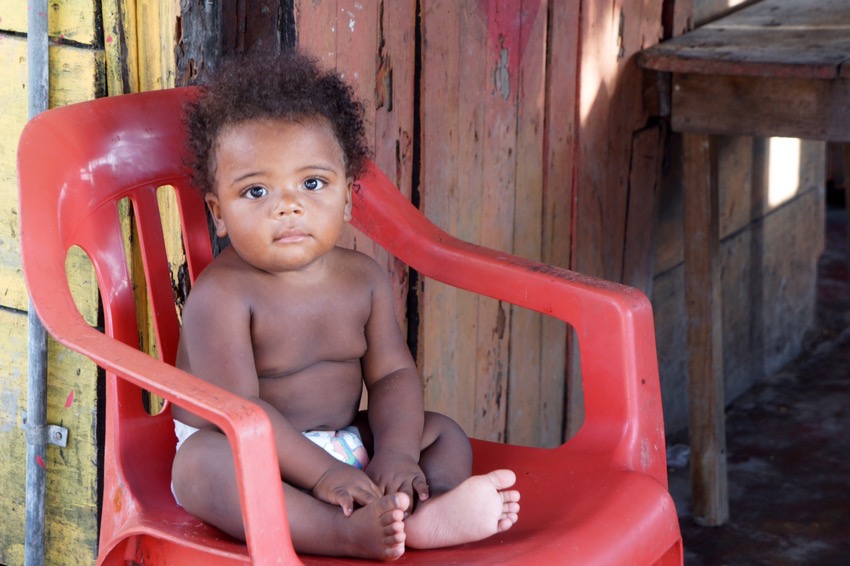
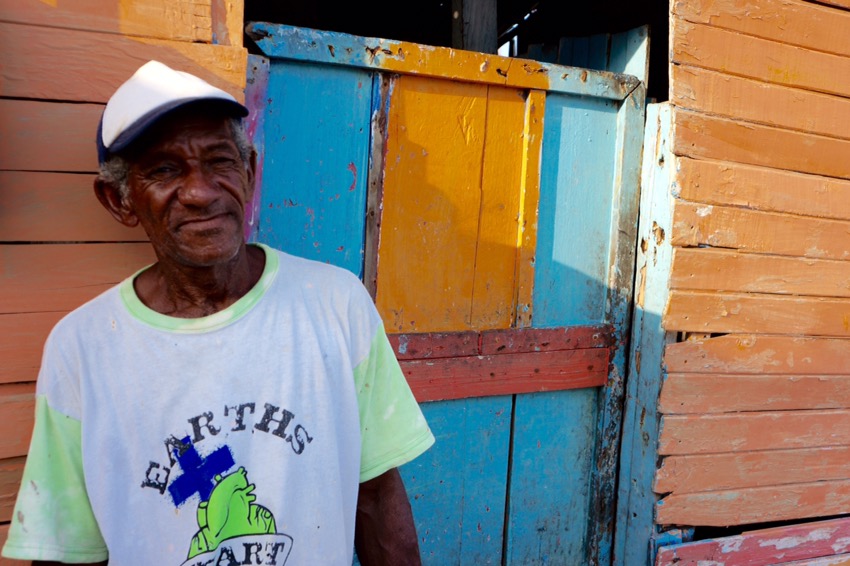
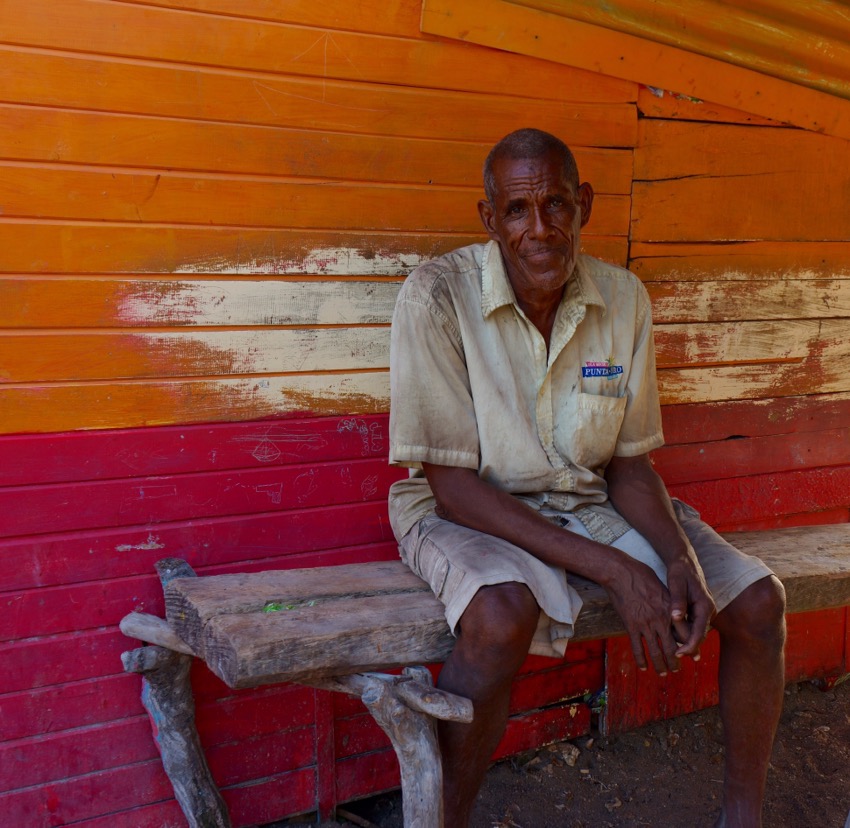 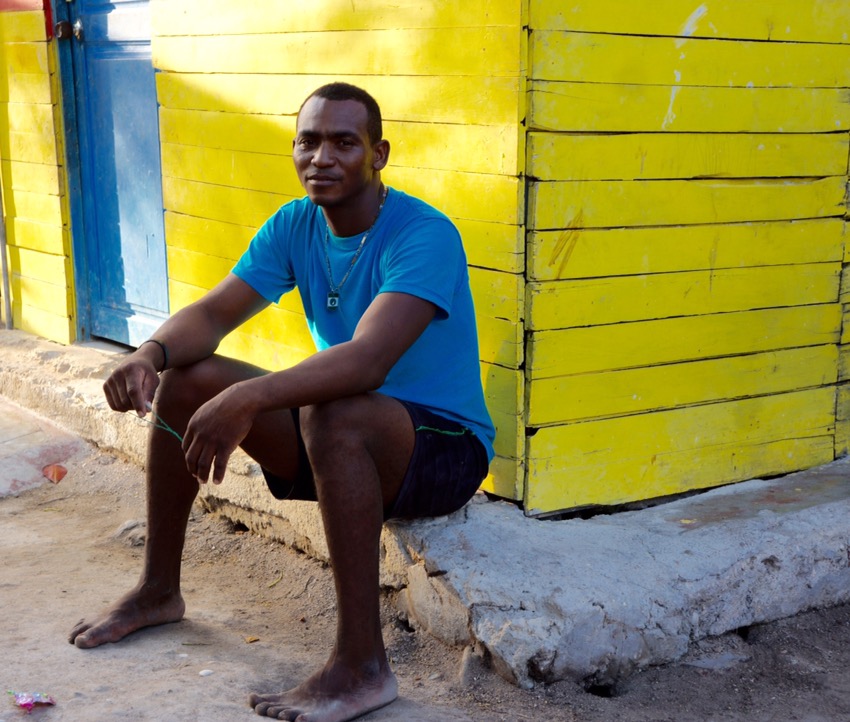
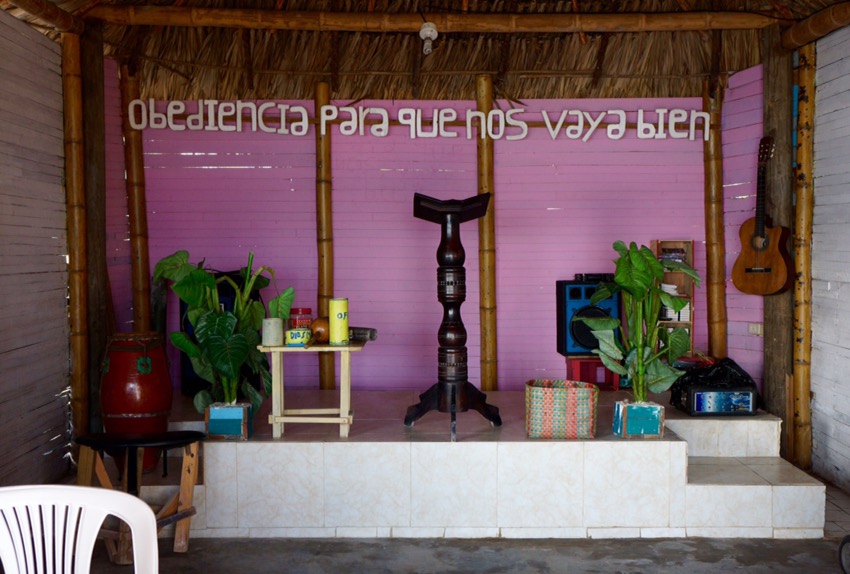
We have a big, outdoor buffet dinner with a rather incongruous music video playing on a large screen, then retire early from what has been a long day.
February 10
In the early morning (5:30) we take a walk around town, waking up with the city and watching it come to life. We stop for a small, strong cup of coffee at a small square, then go to watch school children in uniform arrive at their school around 6:15, riding on the backs of motor scooters driven by their parents. A similar scene in the US would involve lines of SUVs. We walk by the river, a cemetery (with many cats), a church in which Ash Wednesday services are being held and a dilapidated former theater. It’s cooler in the morning and everyone greets us with, “buenas dias” or just “buenas.”
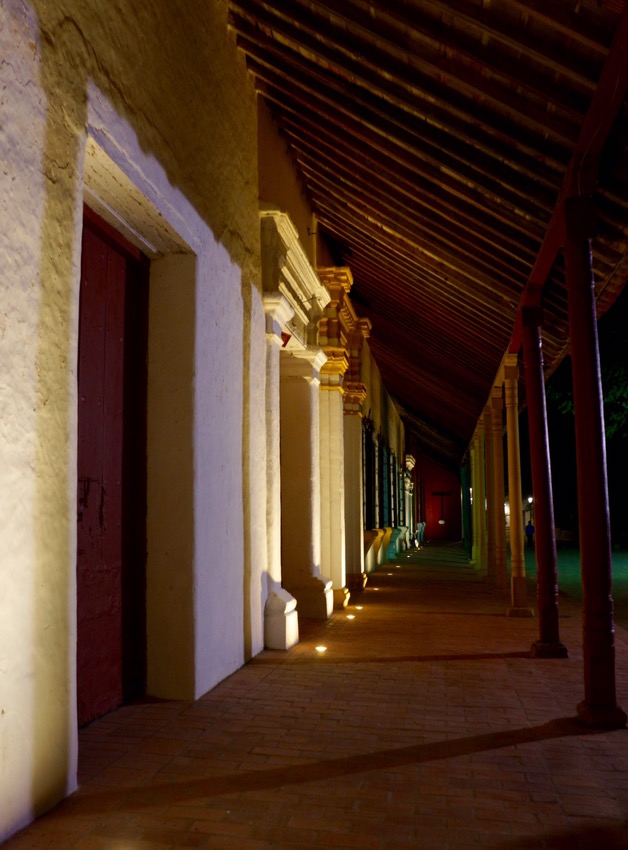 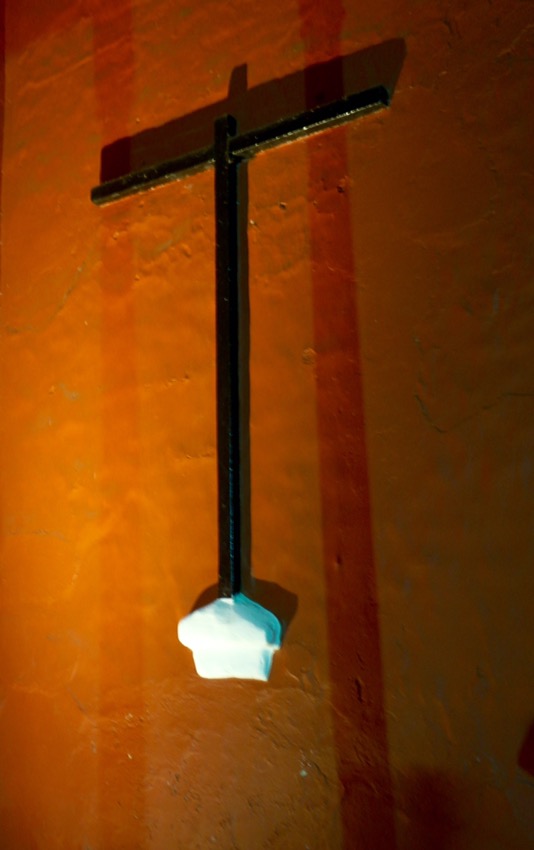
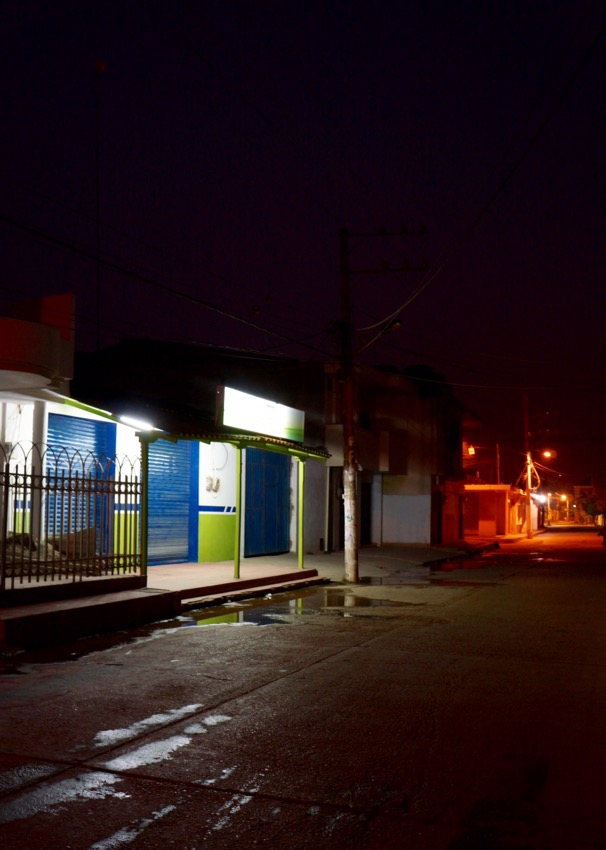 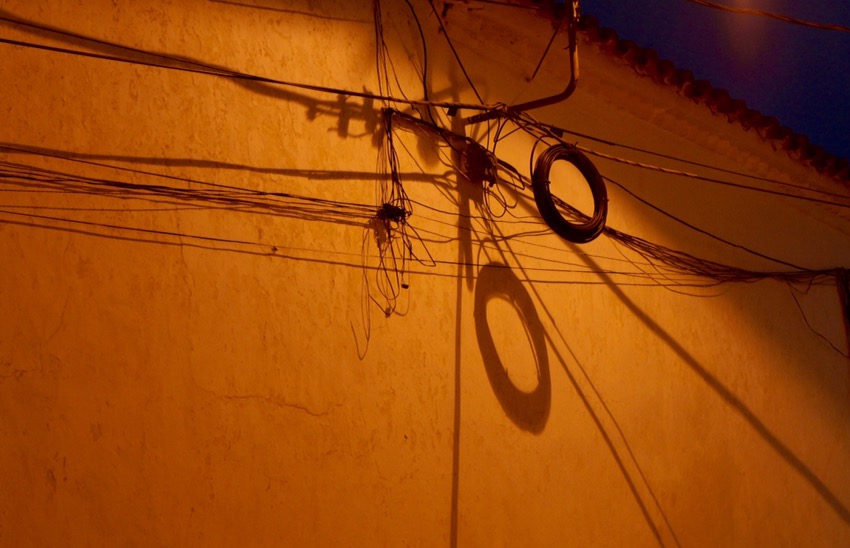 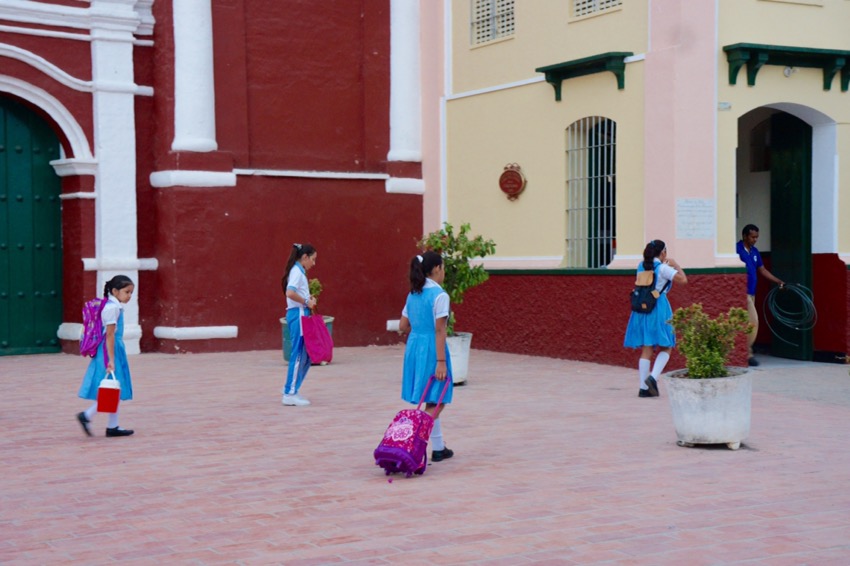
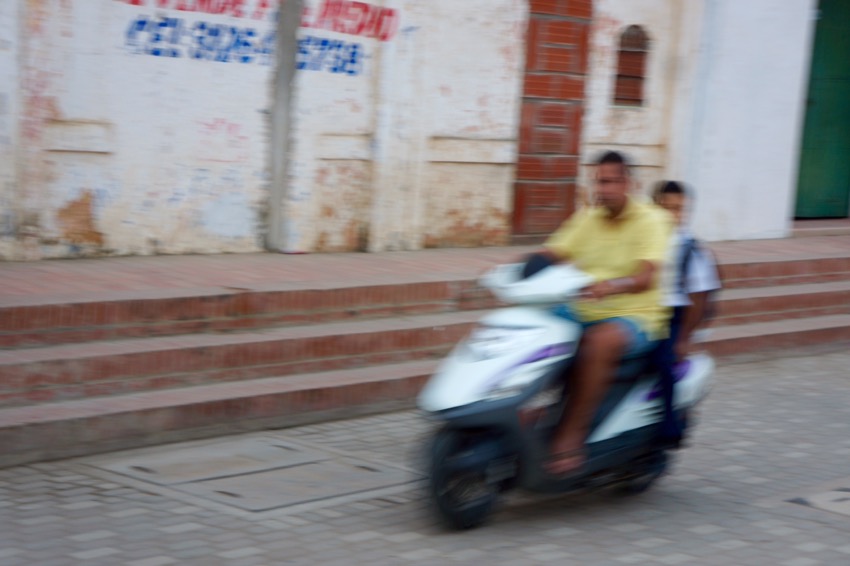 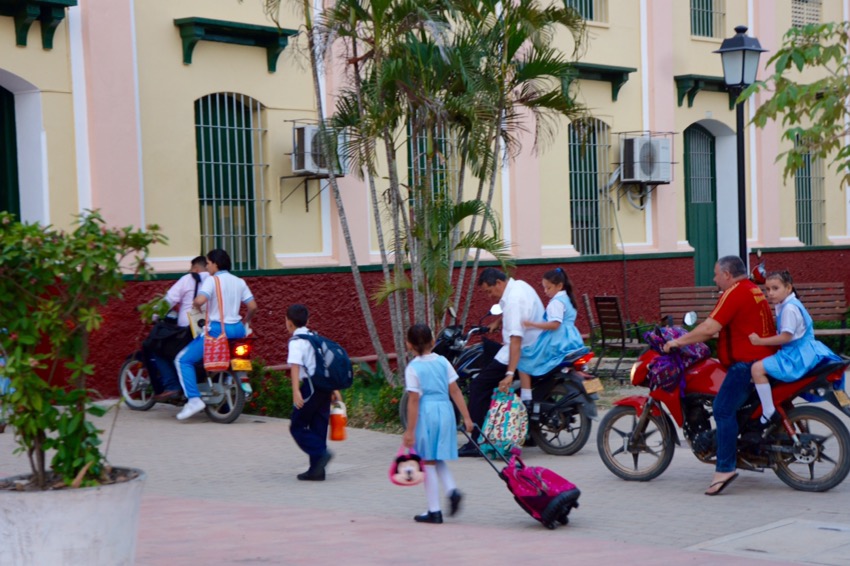
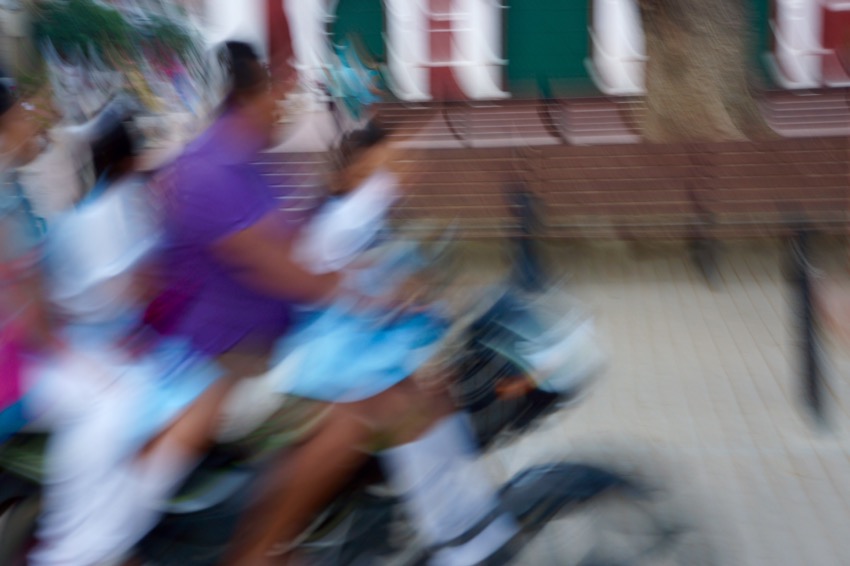
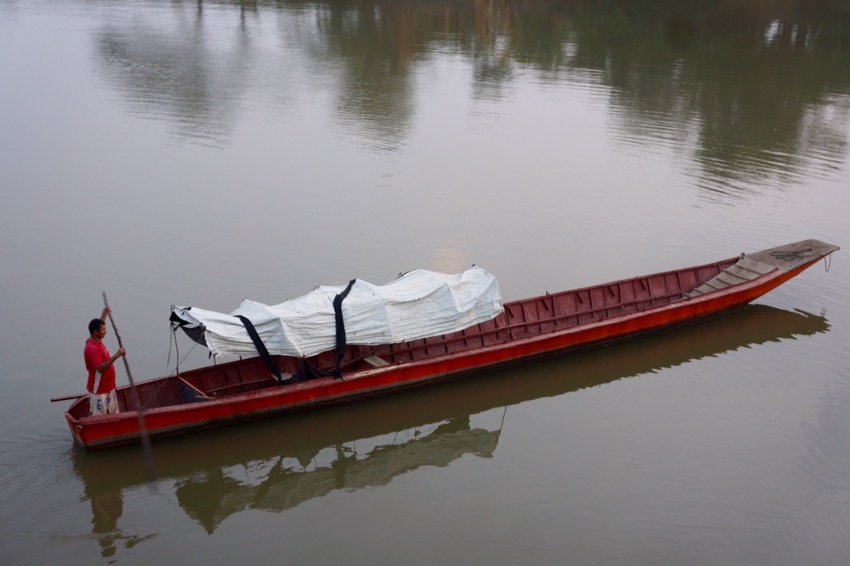
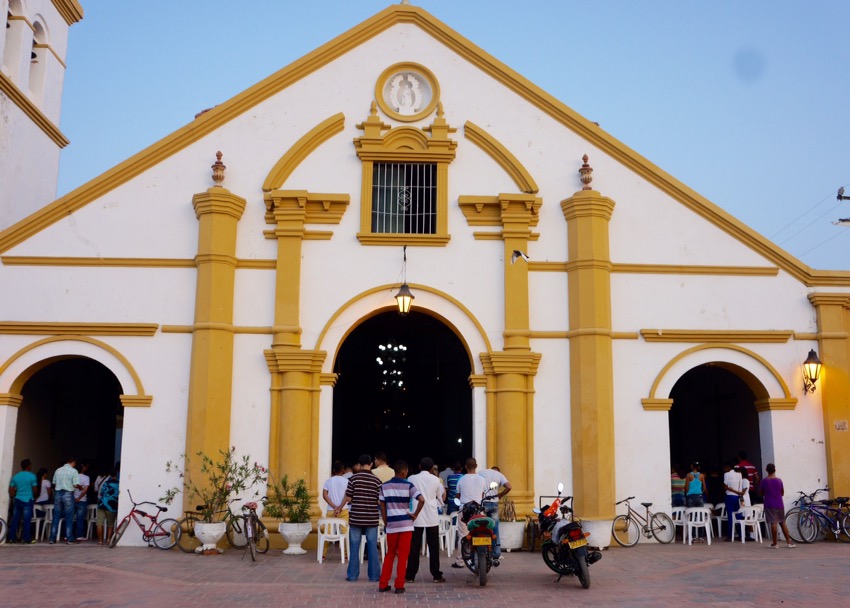 
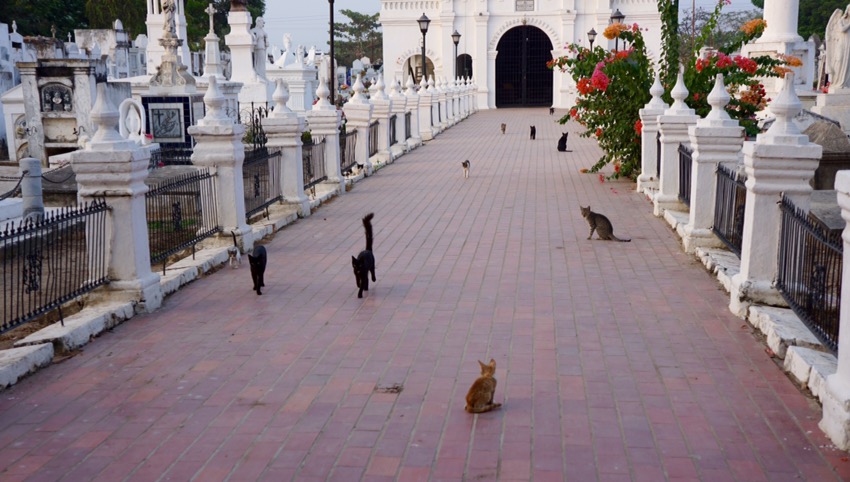 
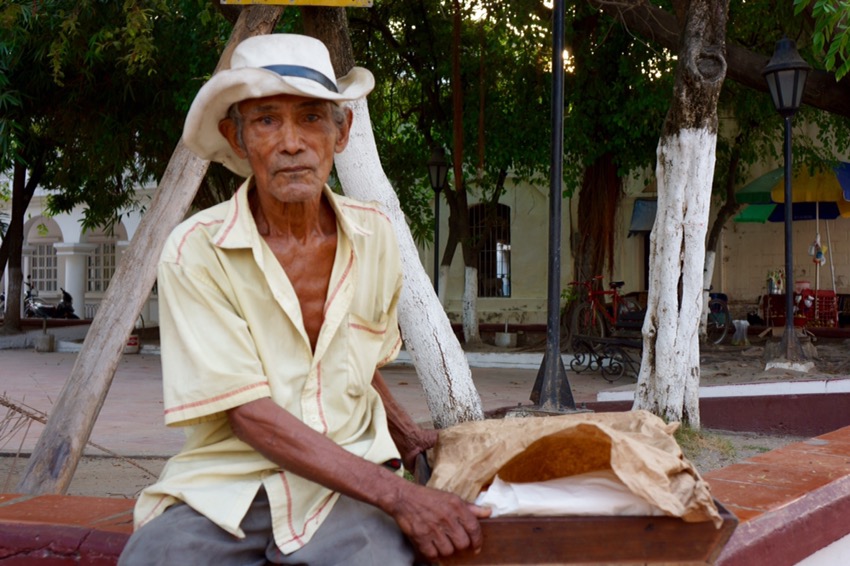 After breakfast at the hotel, we walk along the river to a pier to board the boar we’ve rented for a two-hour boat trip on the river. Because of drought, the river is low and, since the steering on the boat appears to be broken, we ride up and back repeatedly, covering perhaps a hundred meters. This does not seem destined to be a trip highlight, but at least the boat is covered, so we’re not in the blistering sun, and it is something different. After breakfast at the hotel, we walk along the river to a pier to board the boar we’ve rented for a two-hour boat trip on the river. Because of drought, the river is low and, since the steering on the boat appears to be broken, we ride up and back repeatedly, covering perhaps a hundred meters. This does not seem destined to be a trip highlight, but at least the boat is covered, so we’re not in the blistering sun, and it is something different.
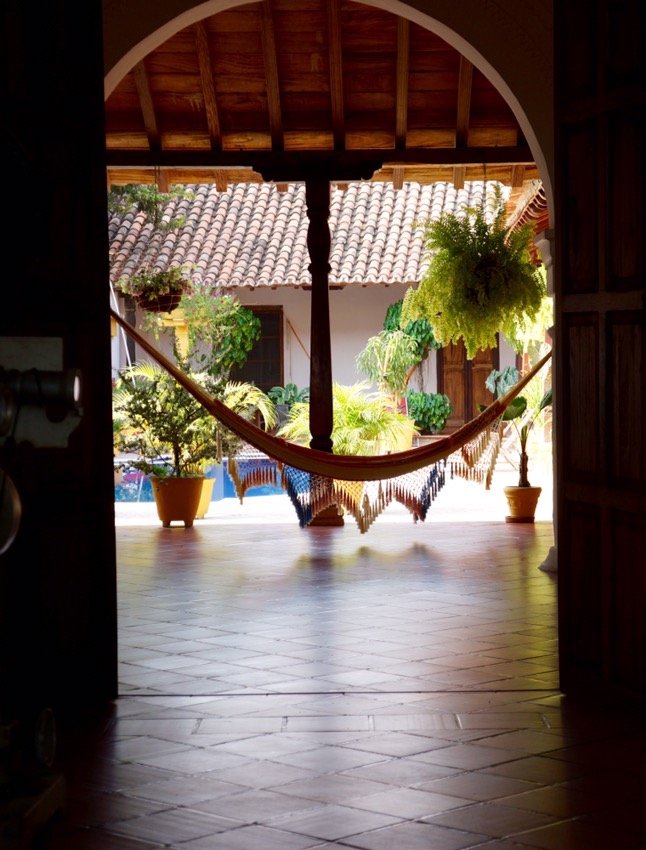 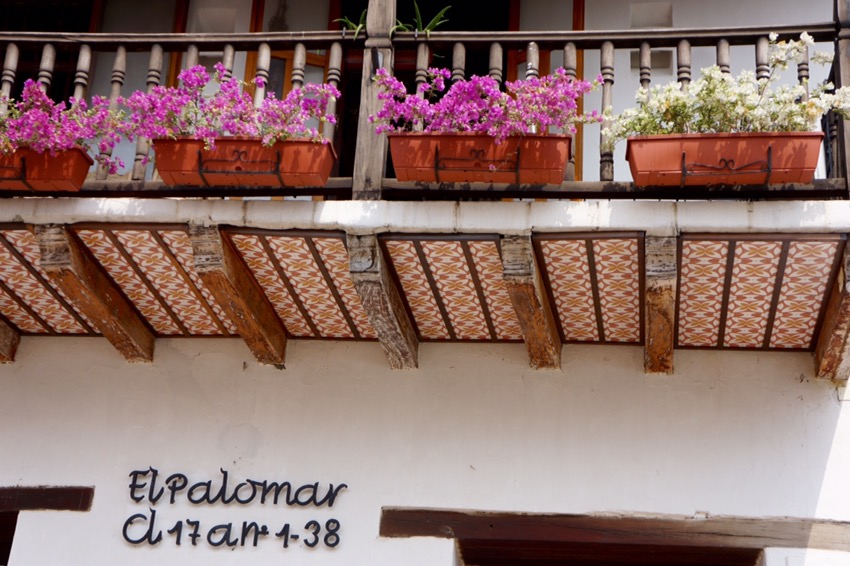
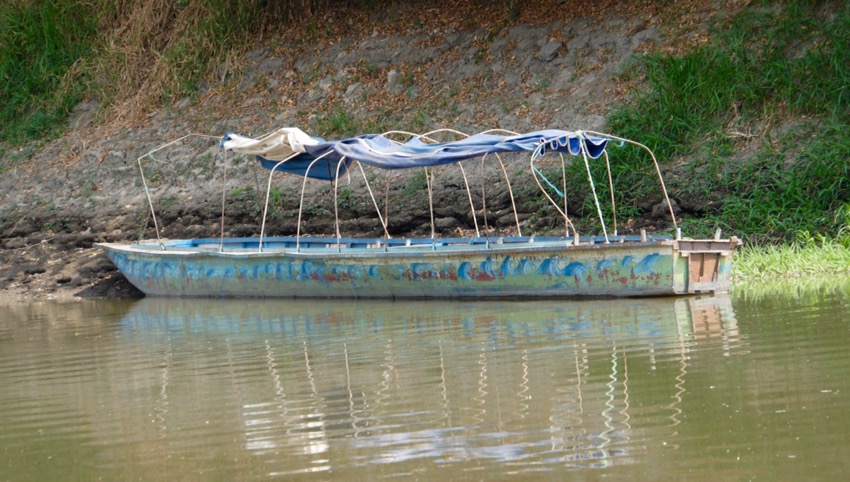 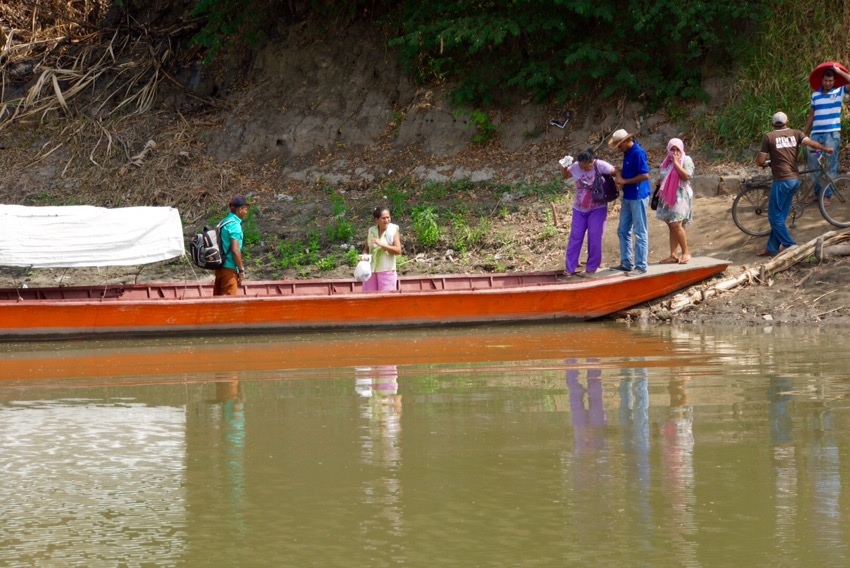
 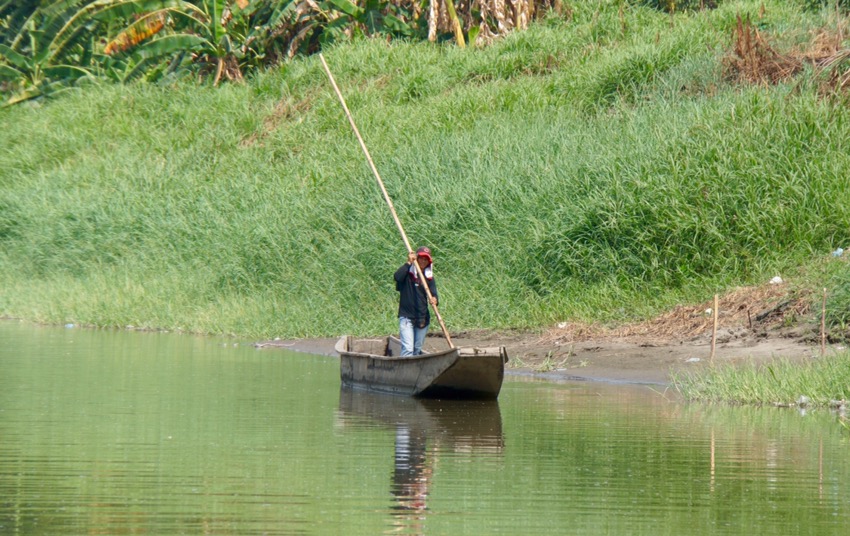 Back to the hotel to cool off, blog and nap. I evidently misunderstood the time at which a group was going to go to some jewelry stores to check out what is supposed to be fine filigree work in silver and gold. Tried to find the group walking, but then flagged down a motorized car, who added me to the passenger he already had. He took me all over town on a bit of a harrowing ride in an unsuccessful attempt to find my compatriots. Back to the hotel to cool off, blog and nap. I evidently misunderstood the time at which a group was going to go to some jewelry stores to check out what is supposed to be fine filigree work in silver and gold. Tried to find the group walking, but then flagged down a motorized car, who added me to the passenger he already had. He took me all over town on a bit of a harrowing ride in an unsuccessful attempt to find my compatriots.
I finally told him to let me out and I walked around a bit, stopped in some jewelry stores but I don’t have a clue what’s fine filigree work. And, it was hotter than hell, so I bought an ice cream (actually a sort of lime Popsicle, ate it quickly before it melted and walked back to the hotel to get back into air conditioning.
 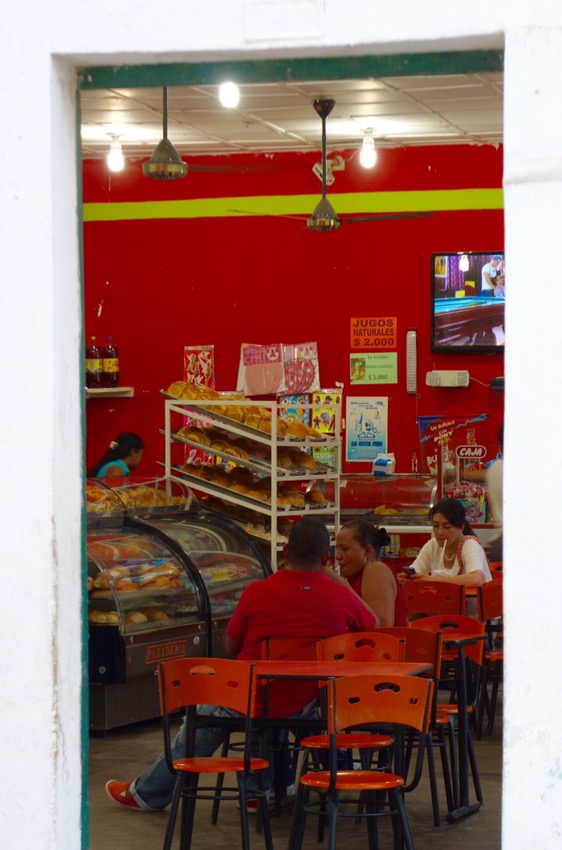
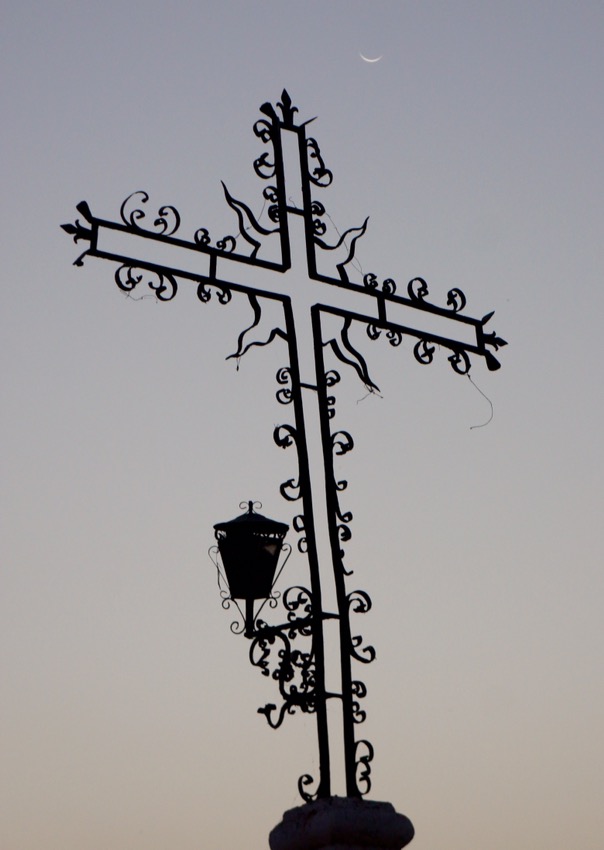
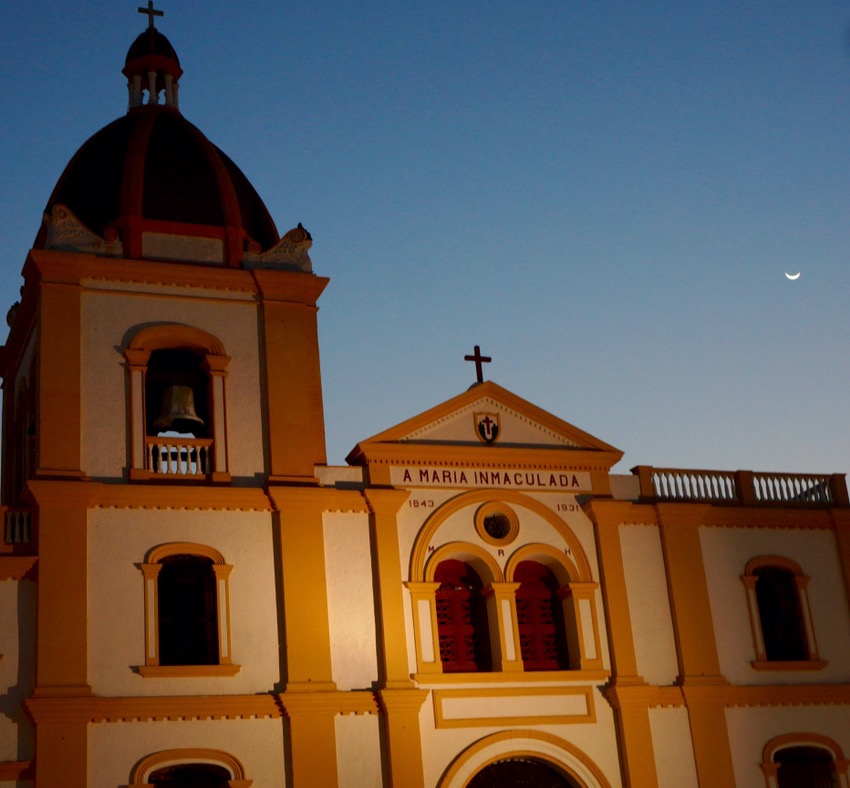 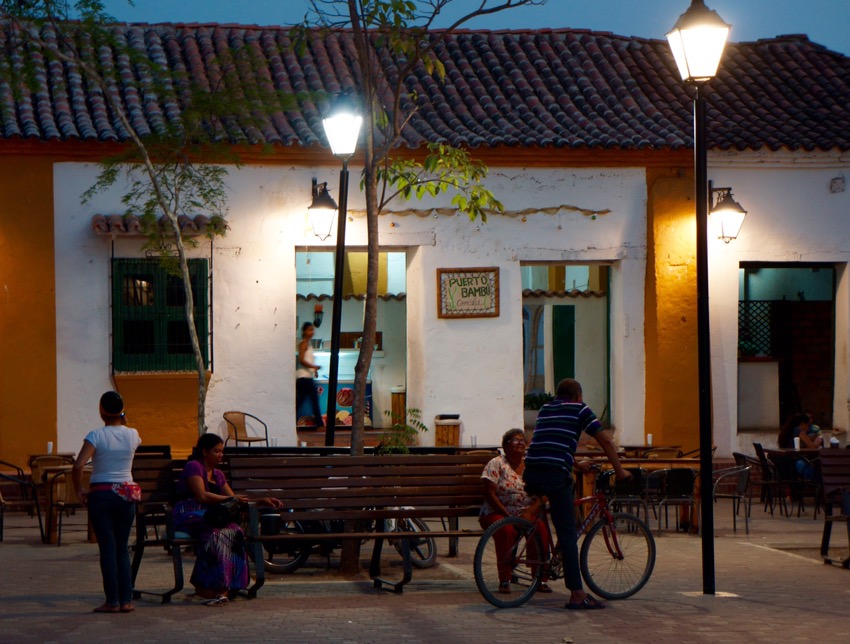
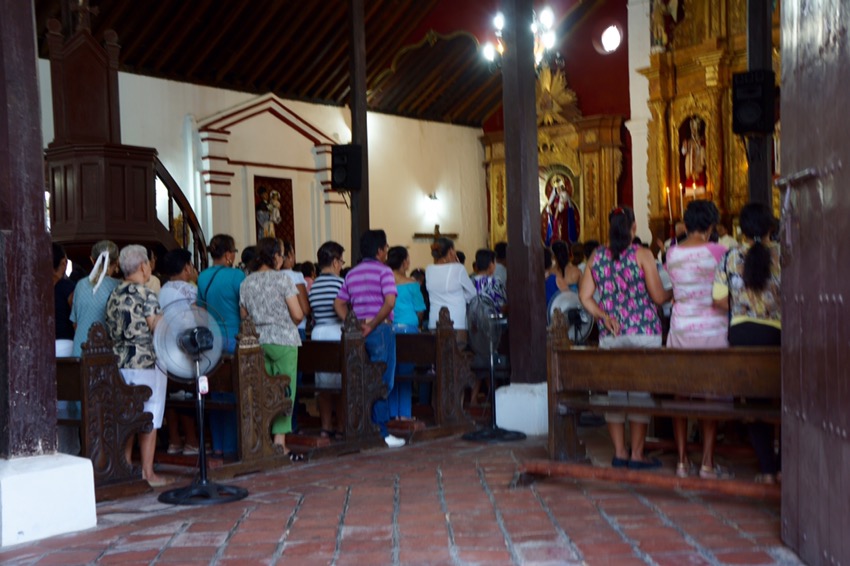 
As evening hits, we separate out and enjoy some individual time exploring, making images mostly on our own, finding details to capture this intoxicating town. Dinner outside in a plaza.
|
|
 This city was the first colonized place in South America in the 16th century. Since then, it has participated in the slave trade from Africa, was terrorized by pirates for many years, fell from prominence and is undergoing a revitalization plan, as nicer boutique hotels and restaurants start moving in. The first church in the Americas, a beautiful waterfront, quaint narrow and colorful streets and friendly locals make it a fine place to absorb the Caribbean spirit in a place that is far less known and less commercialized than Cartagena. Sunday is a very quiet time, except near the beach, which is a bustle of activity.
This city was the first colonized place in South America in the 16th century. Since then, it has participated in the slave trade from Africa, was terrorized by pirates for many years, fell from prominence and is undergoing a revitalization plan, as nicer boutique hotels and restaurants start moving in. The first church in the Americas, a beautiful waterfront, quaint narrow and colorful streets and friendly locals make it a fine place to absorb the Caribbean spirit in a place that is far less known and less commercialized than Cartagena. Sunday is a very quiet time, except near the beach, which is a bustle of activity. 



























































































